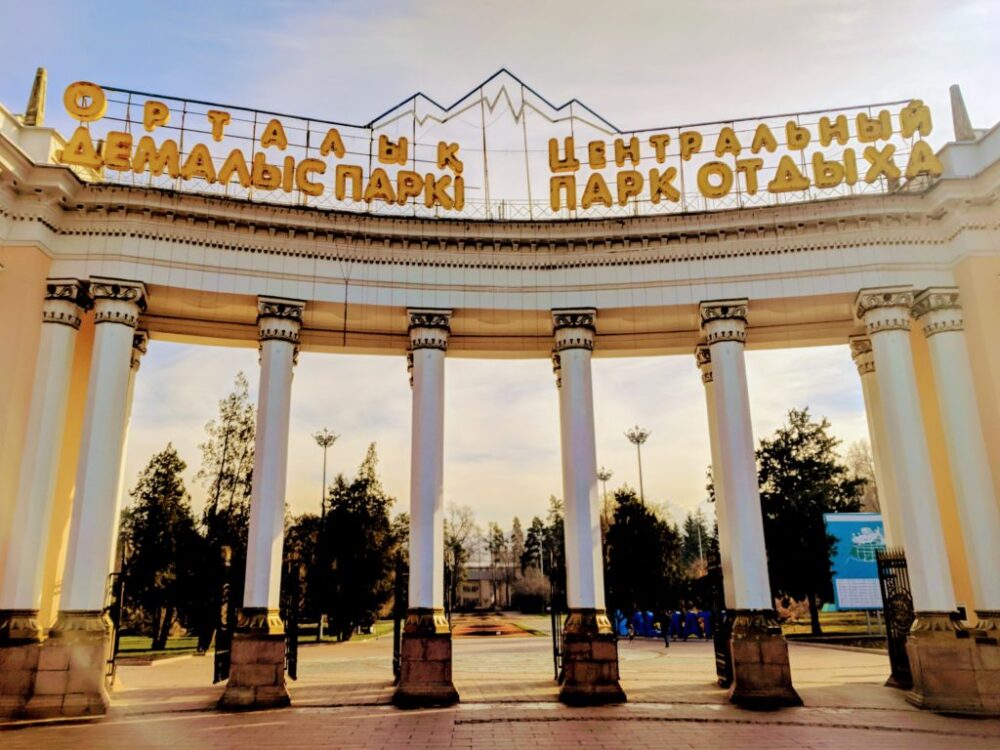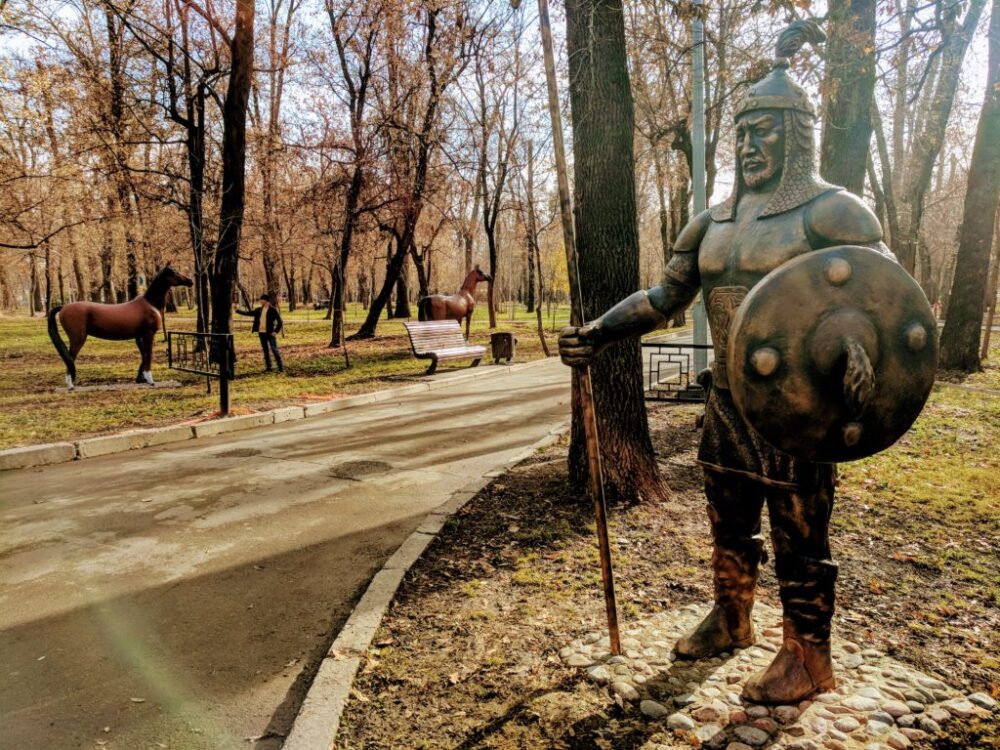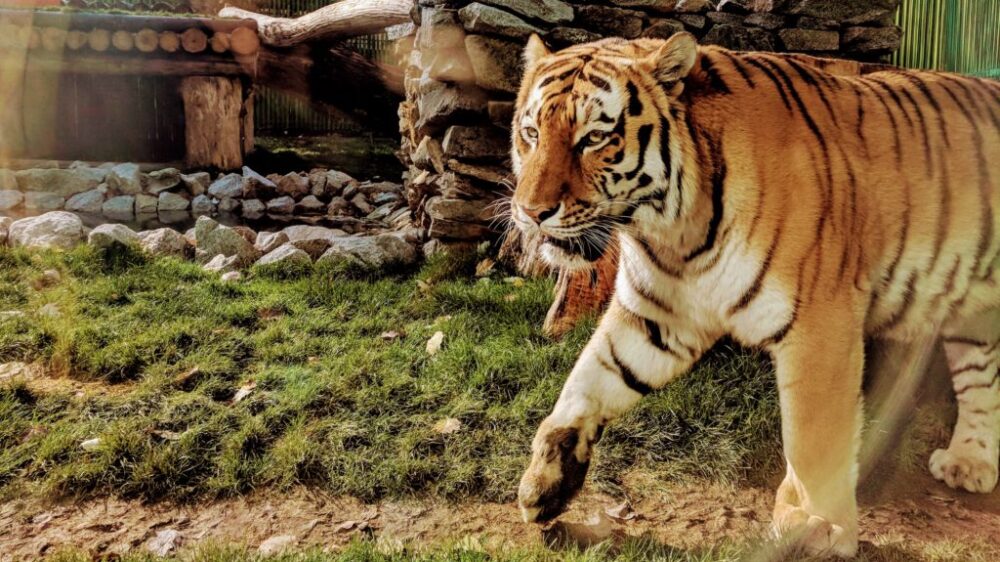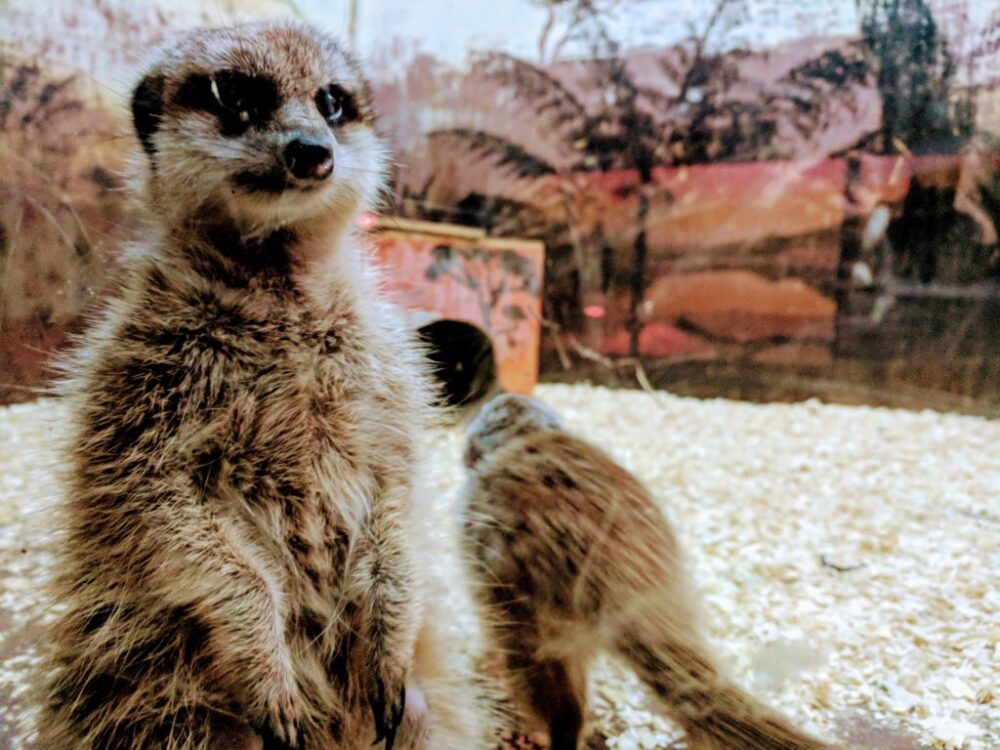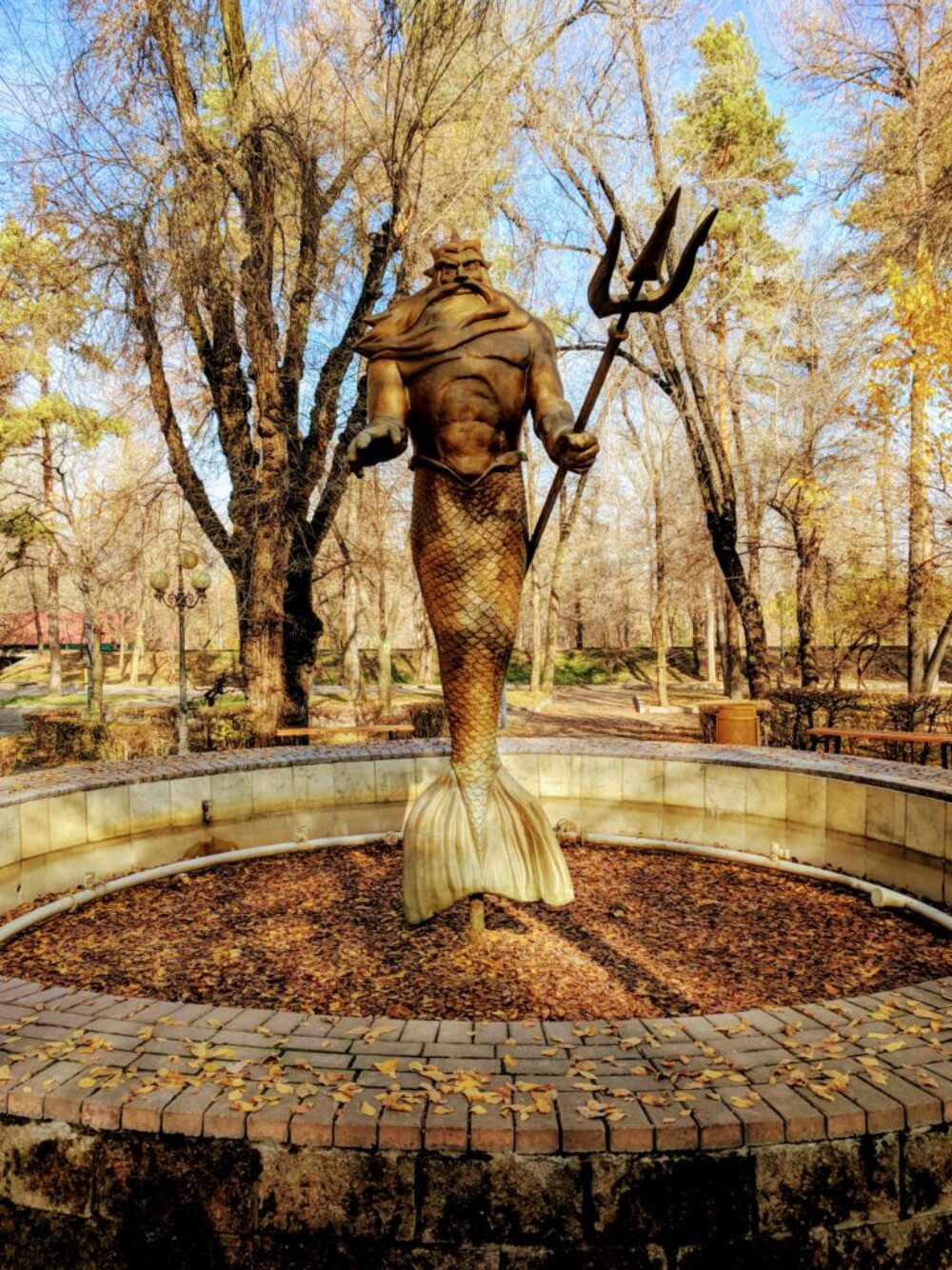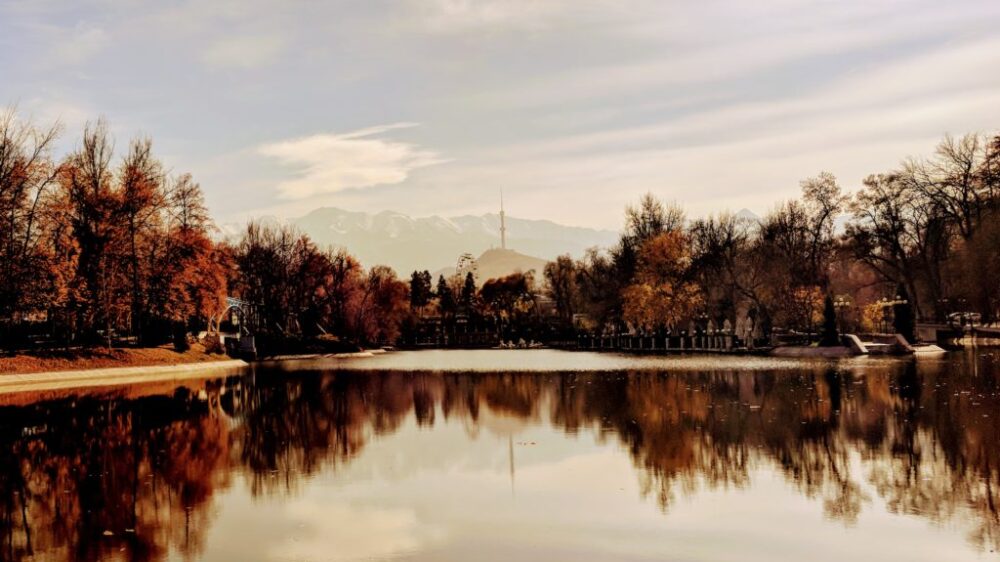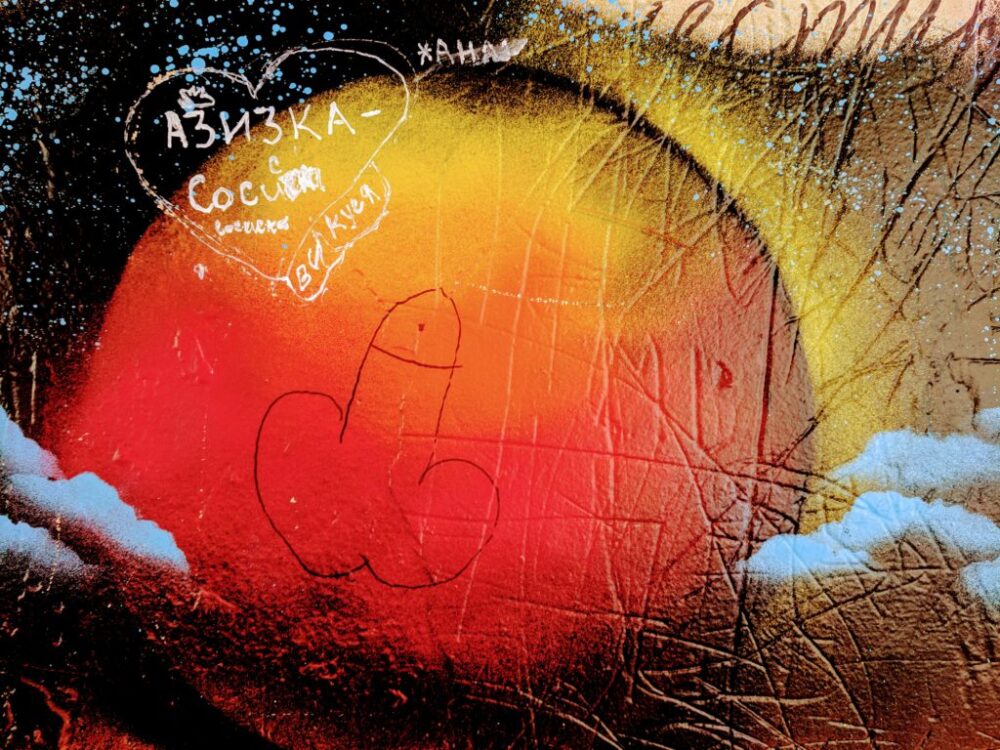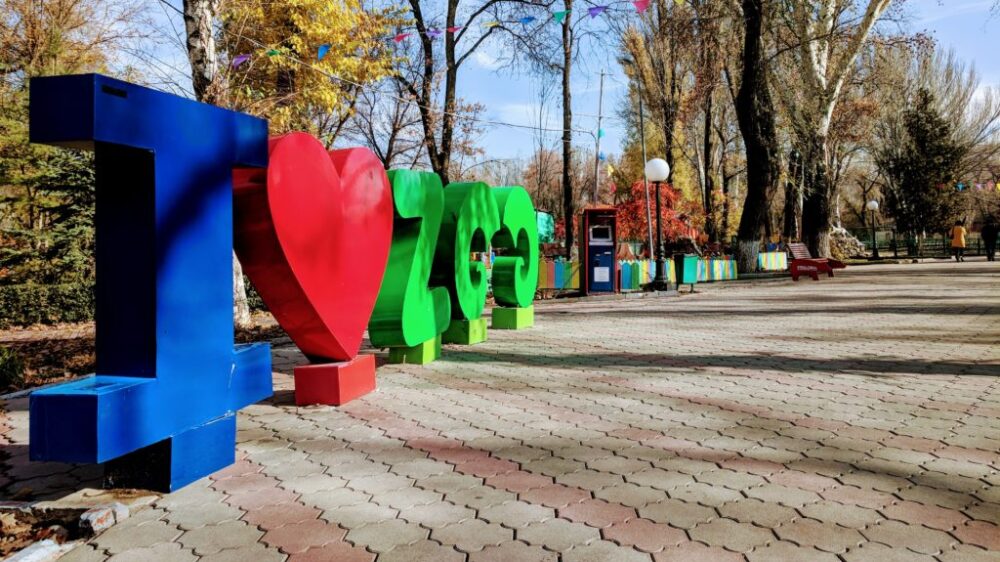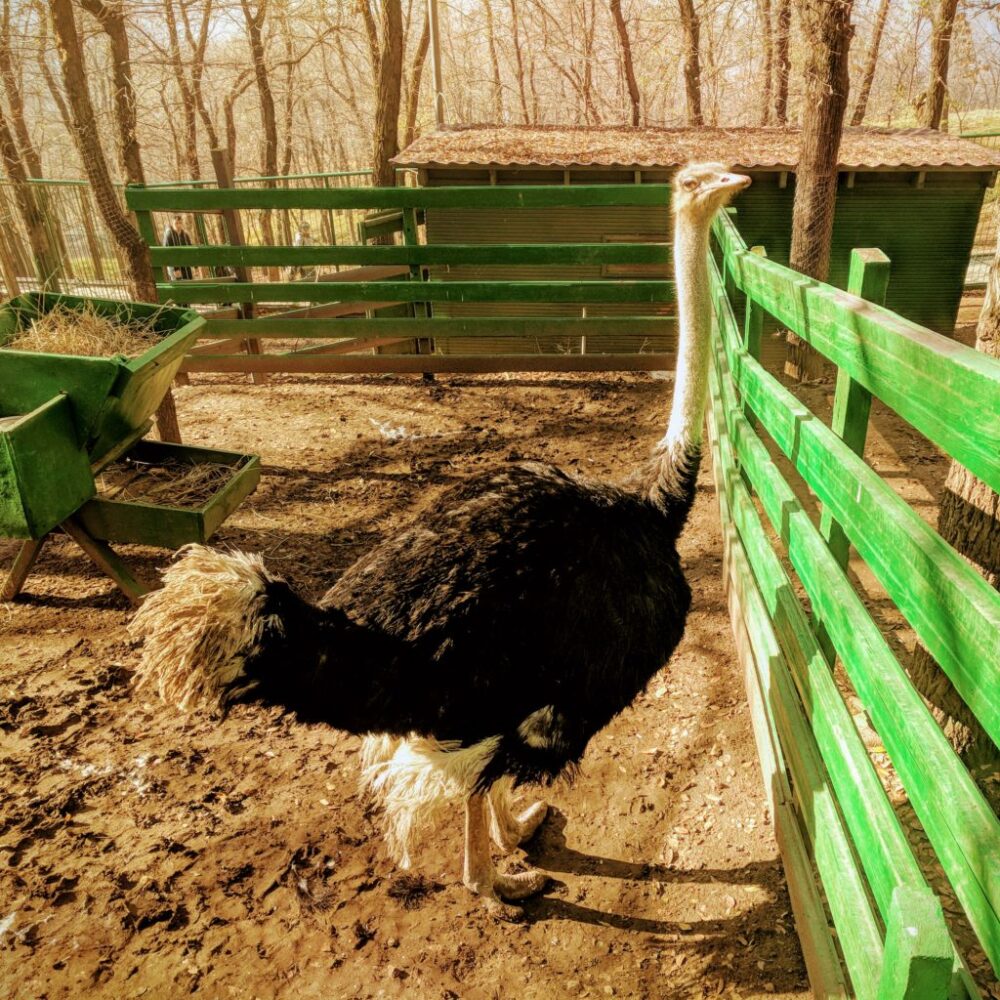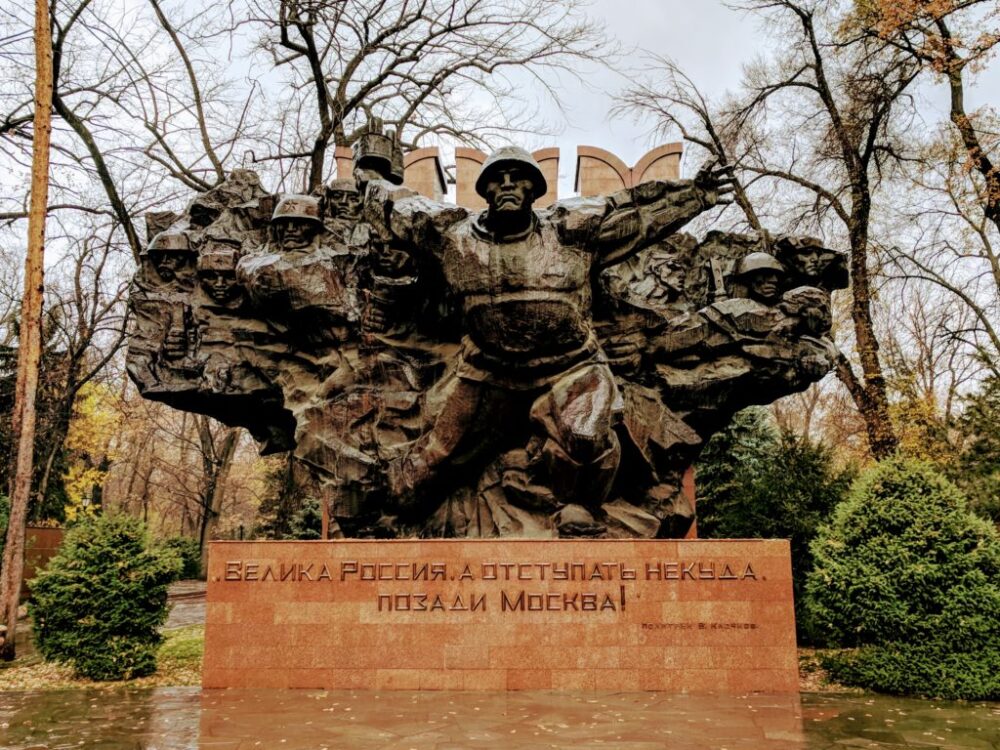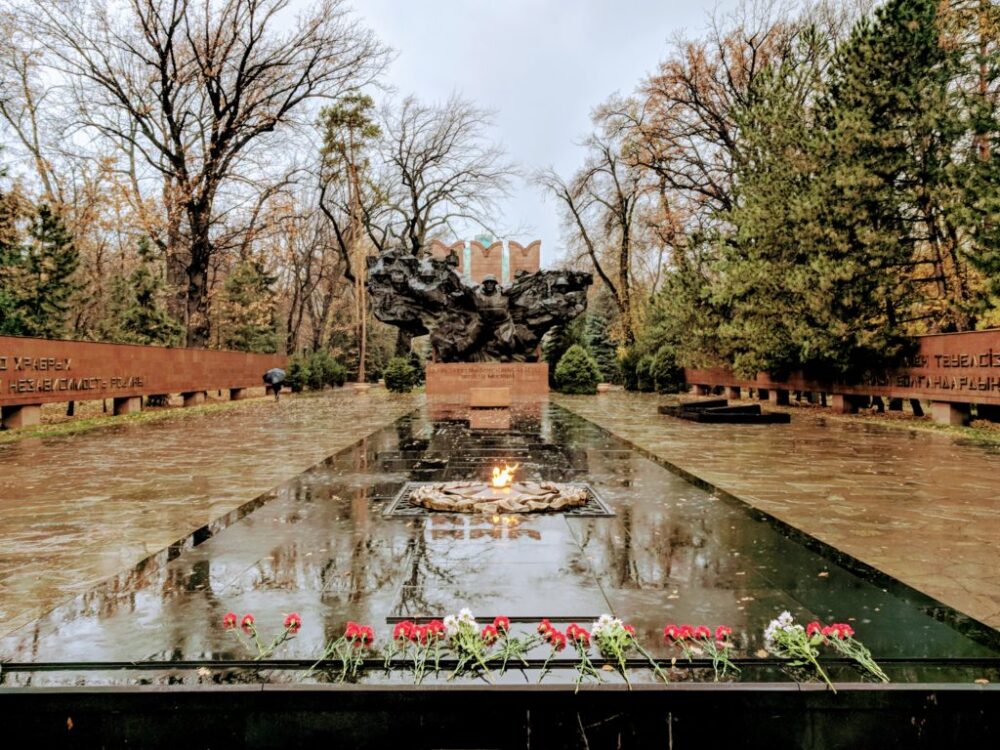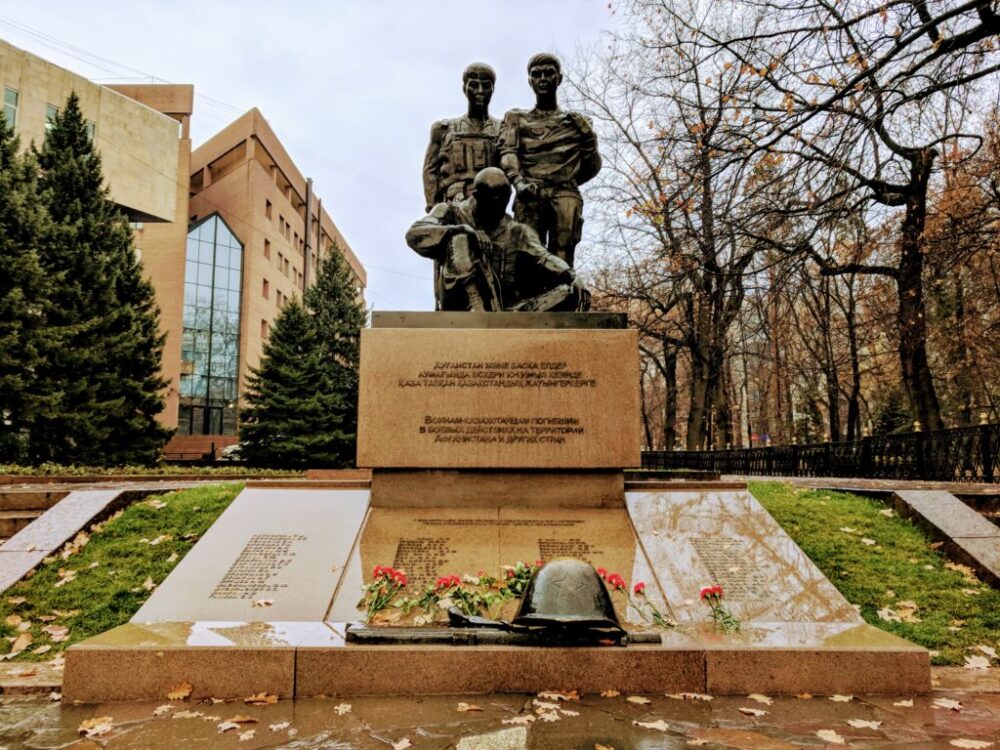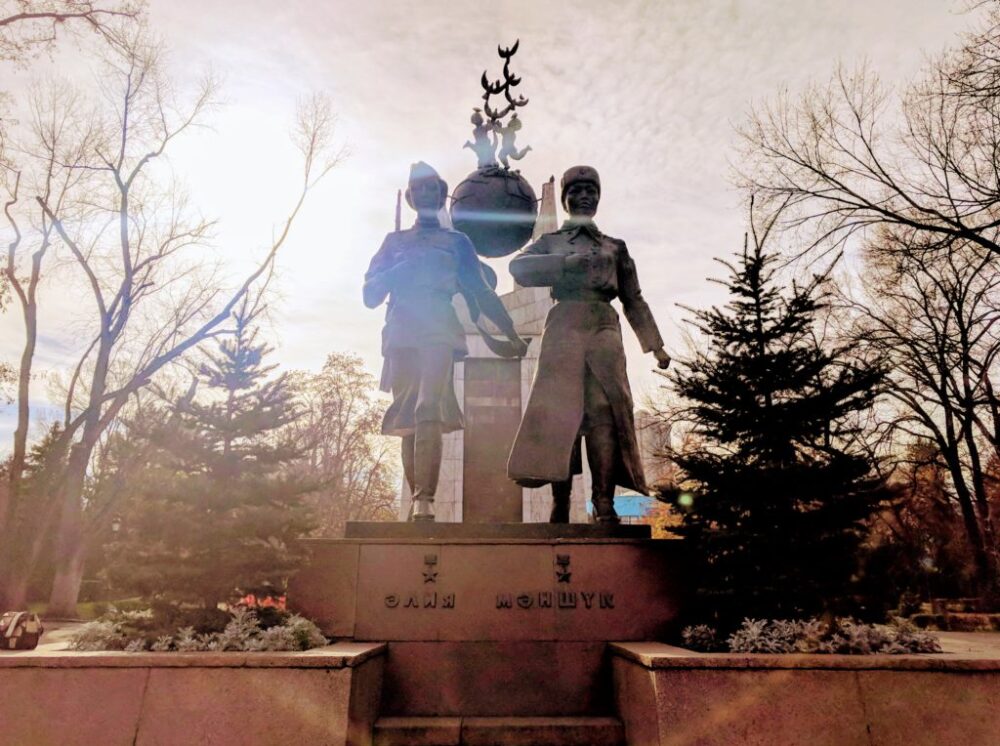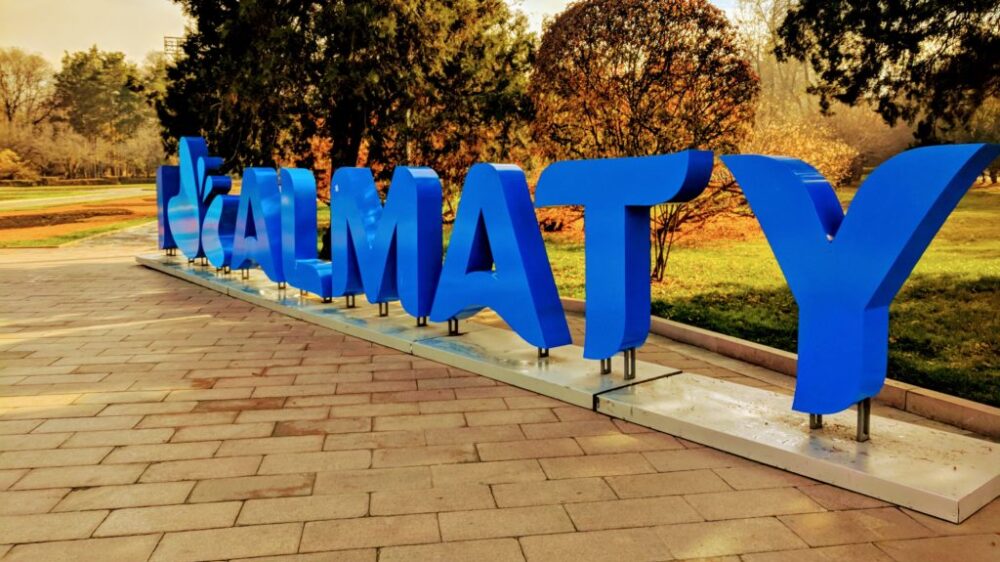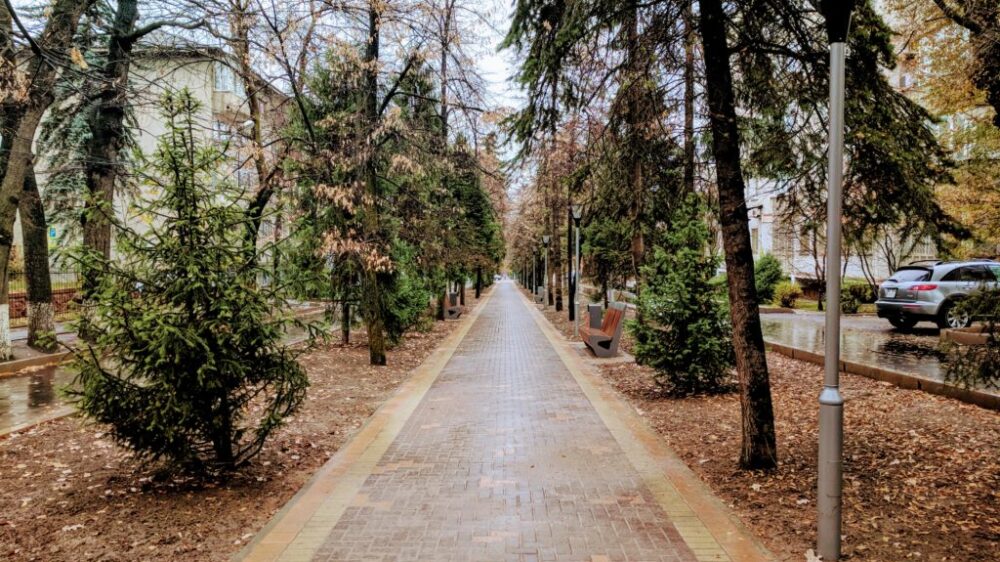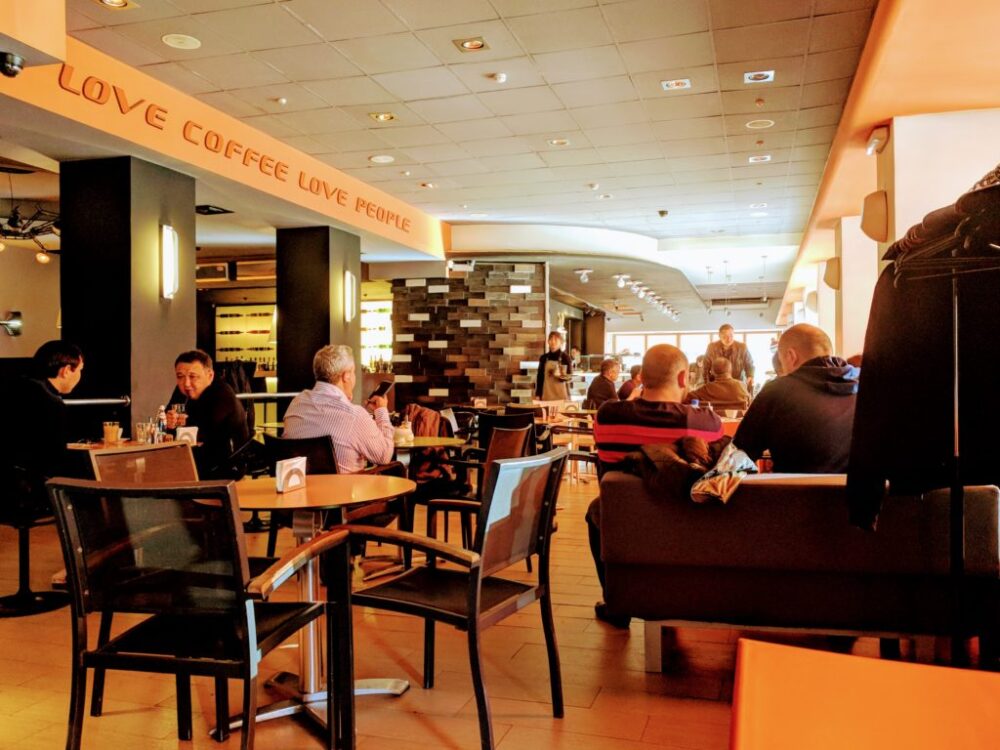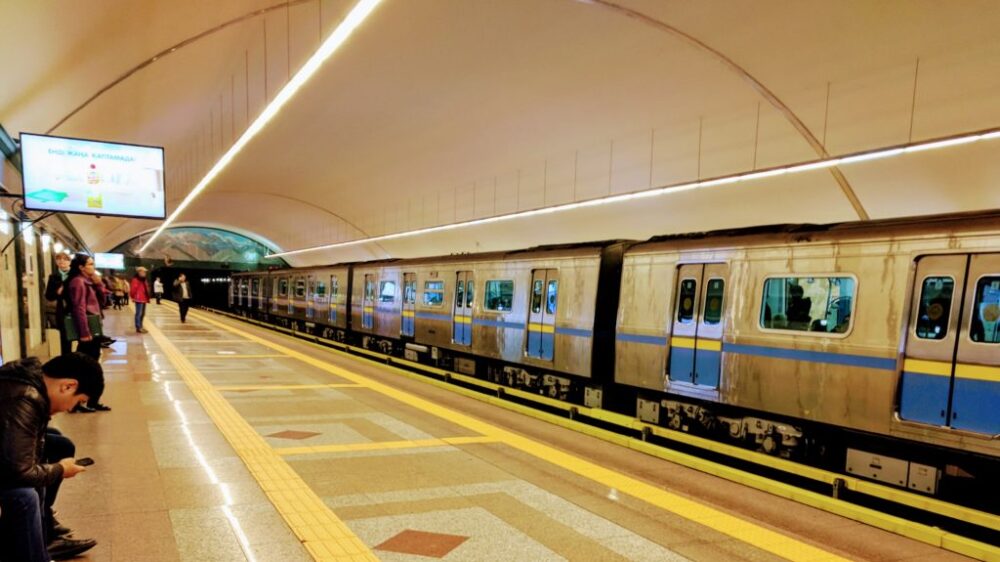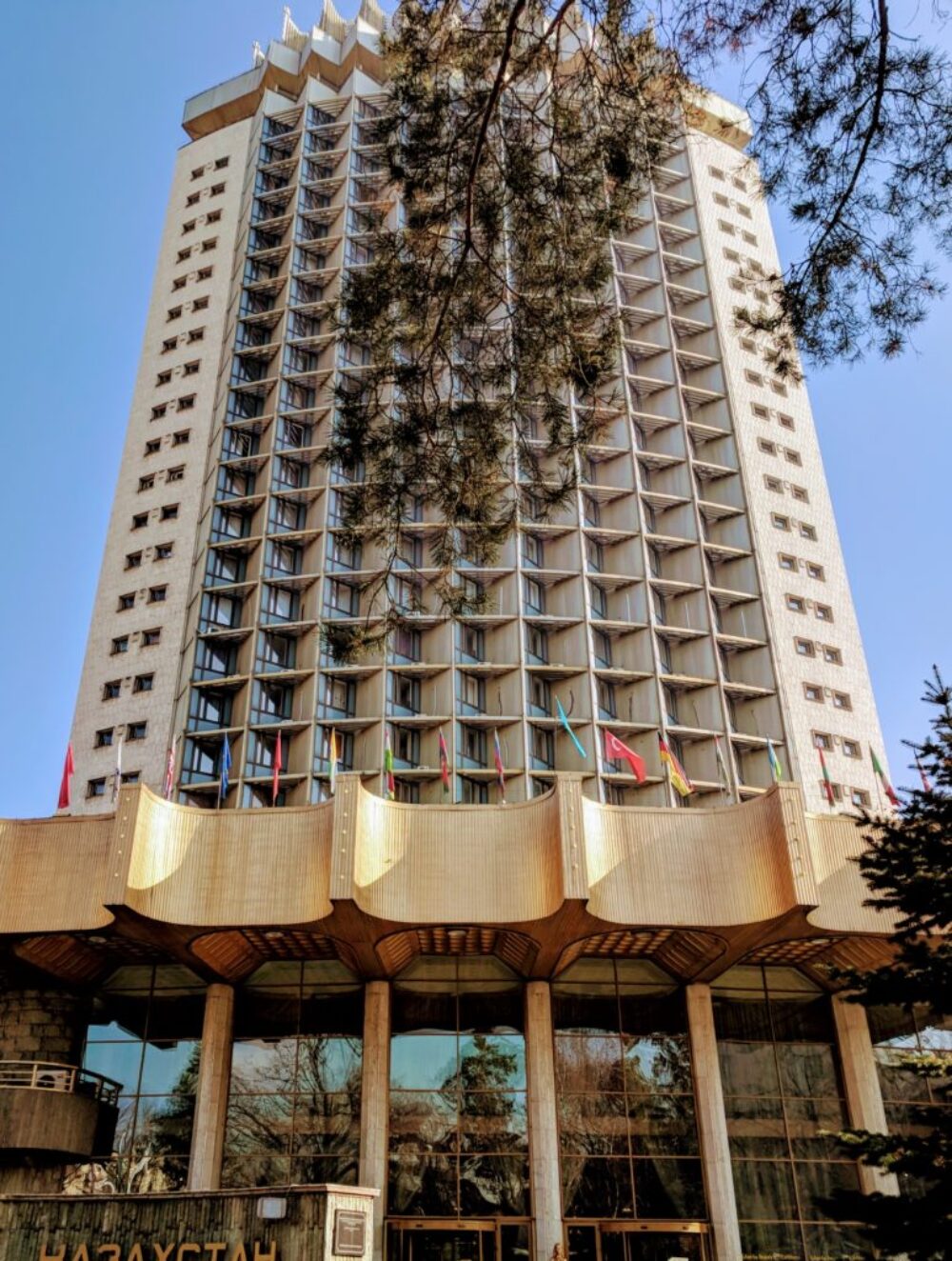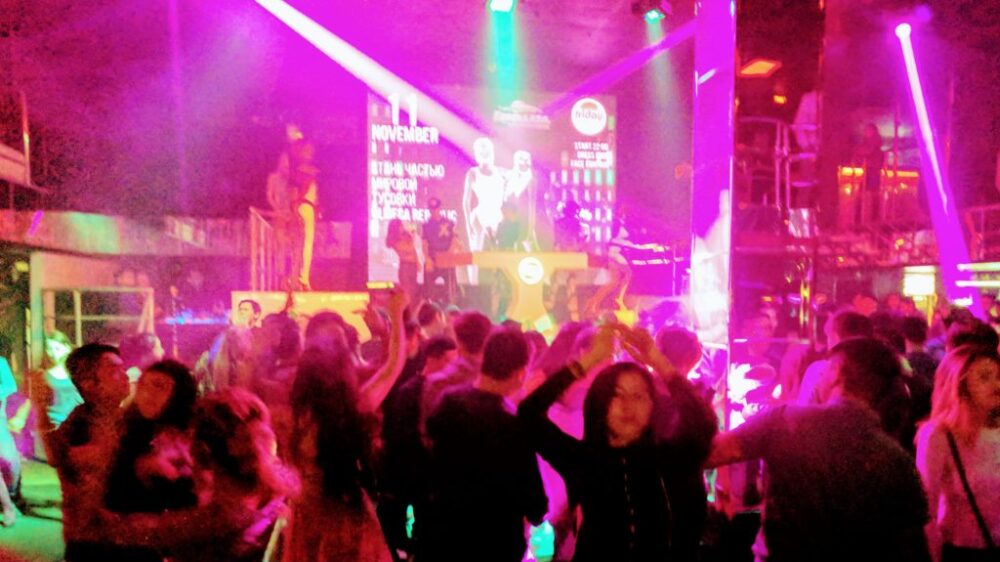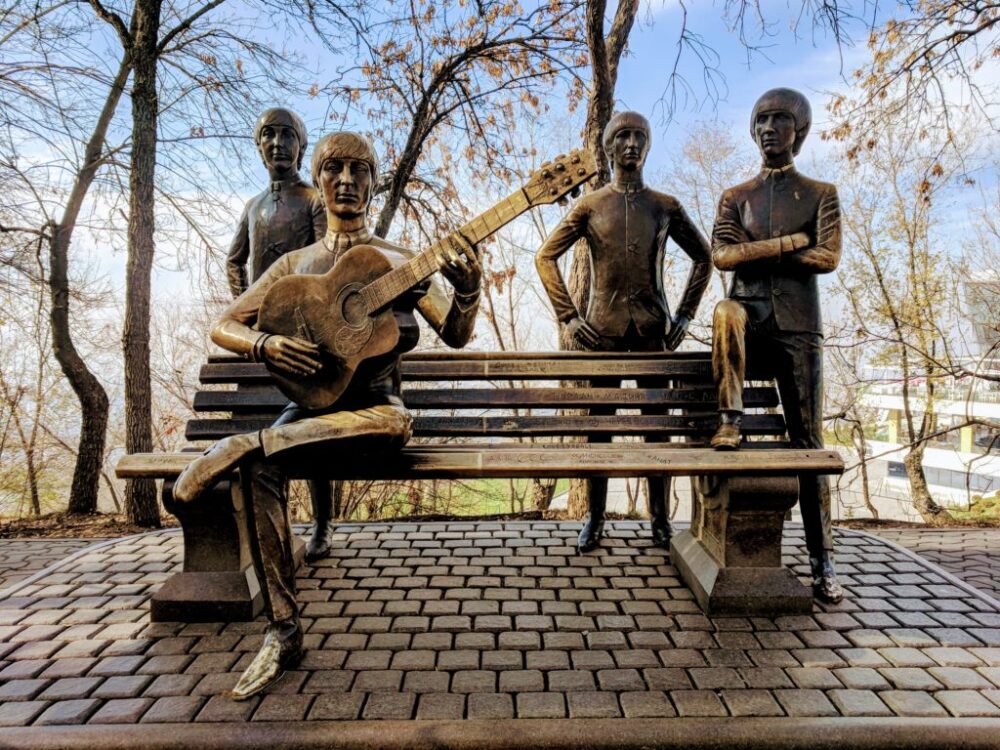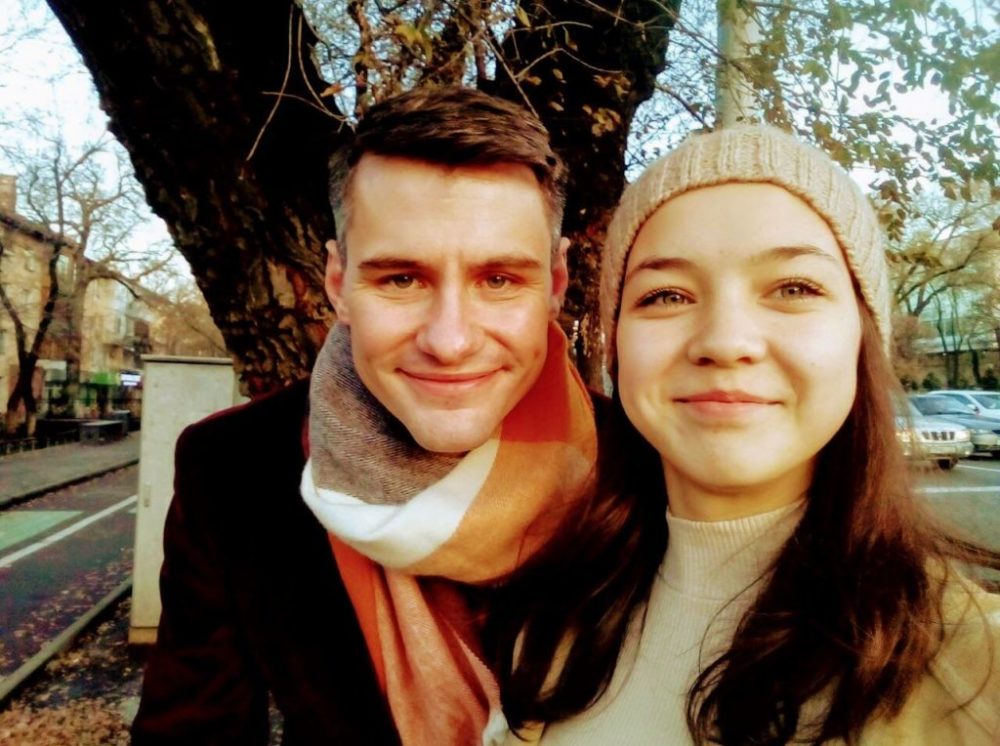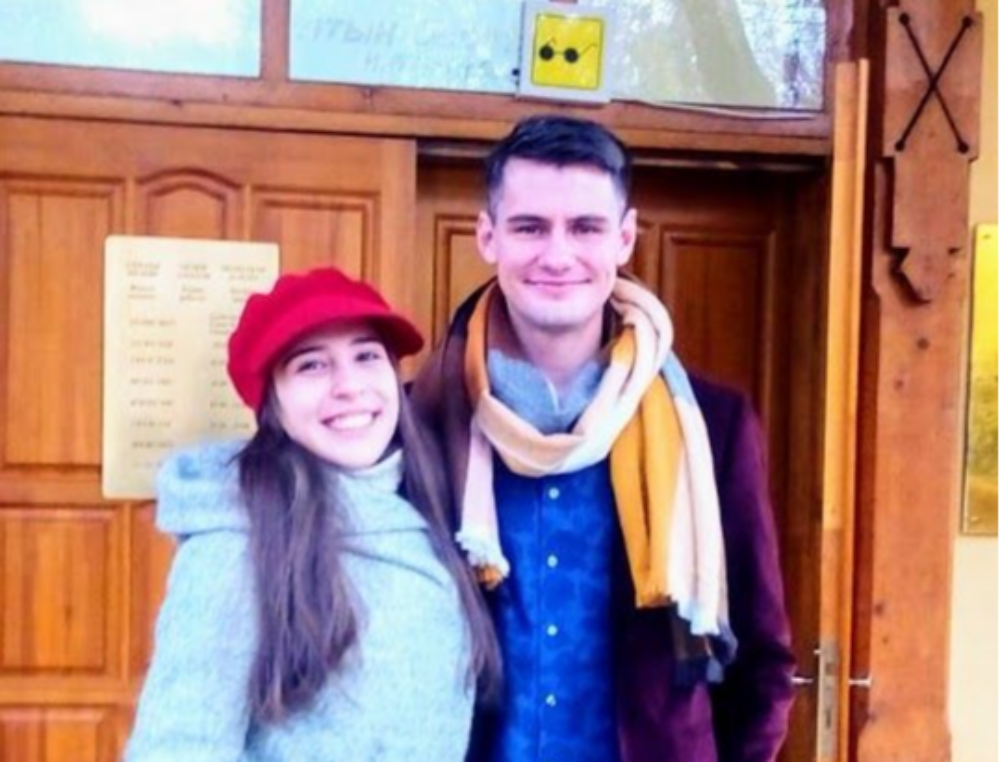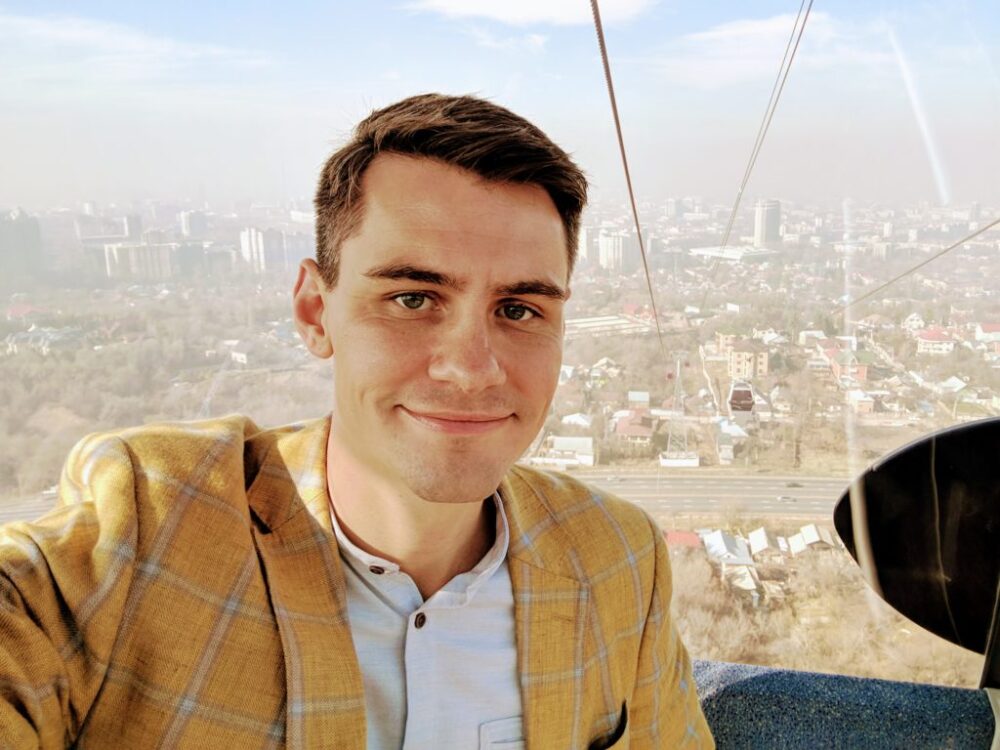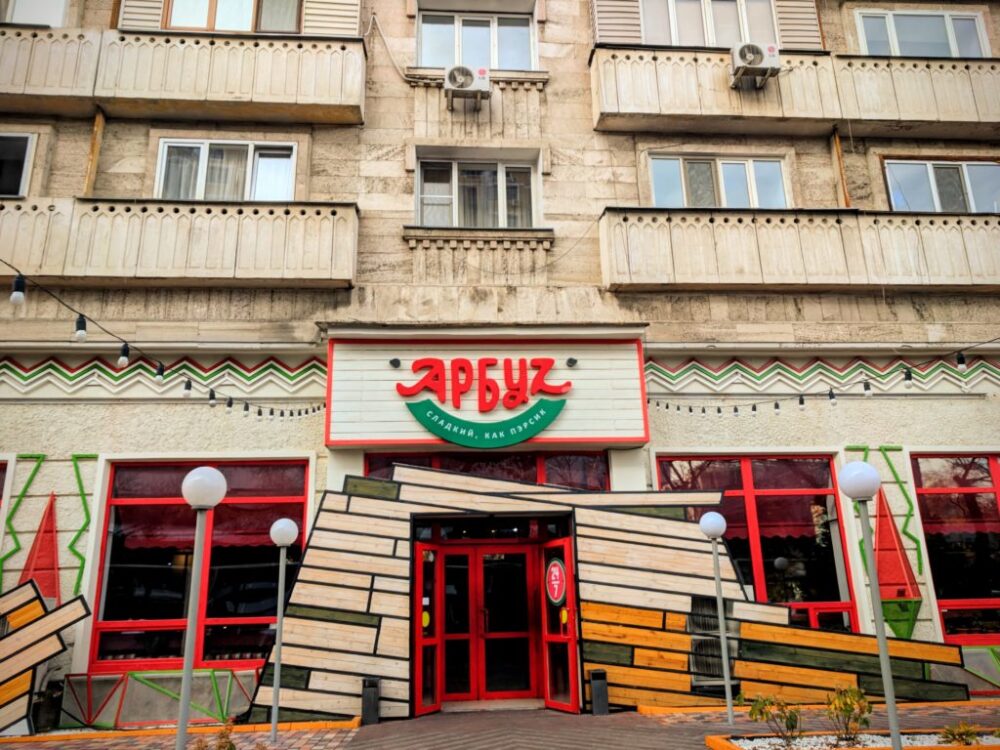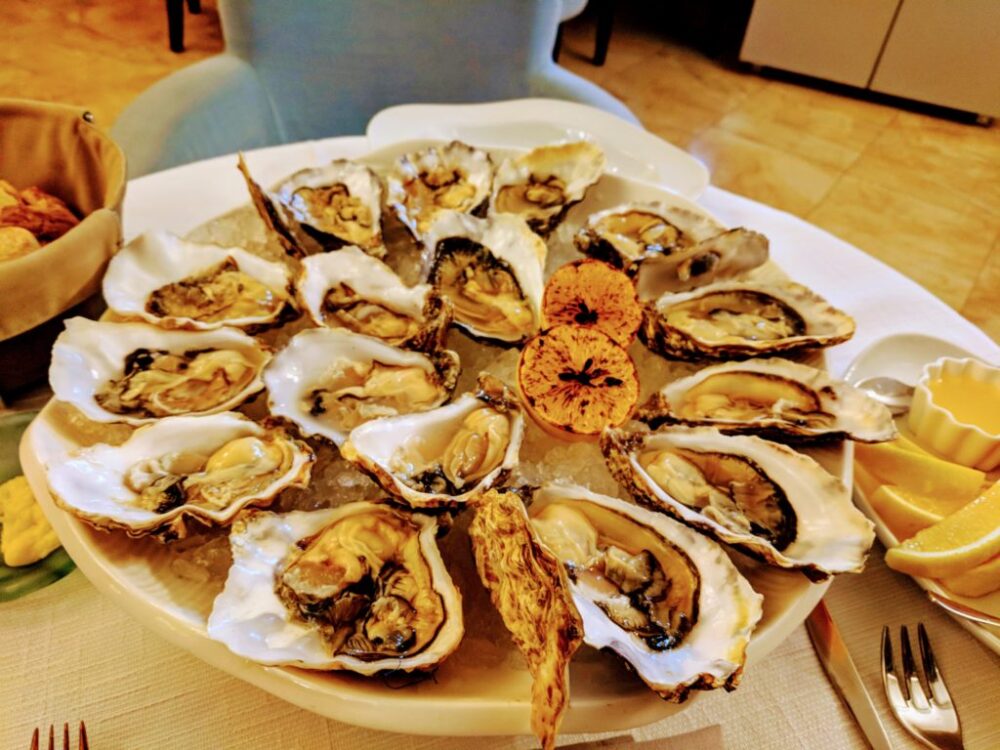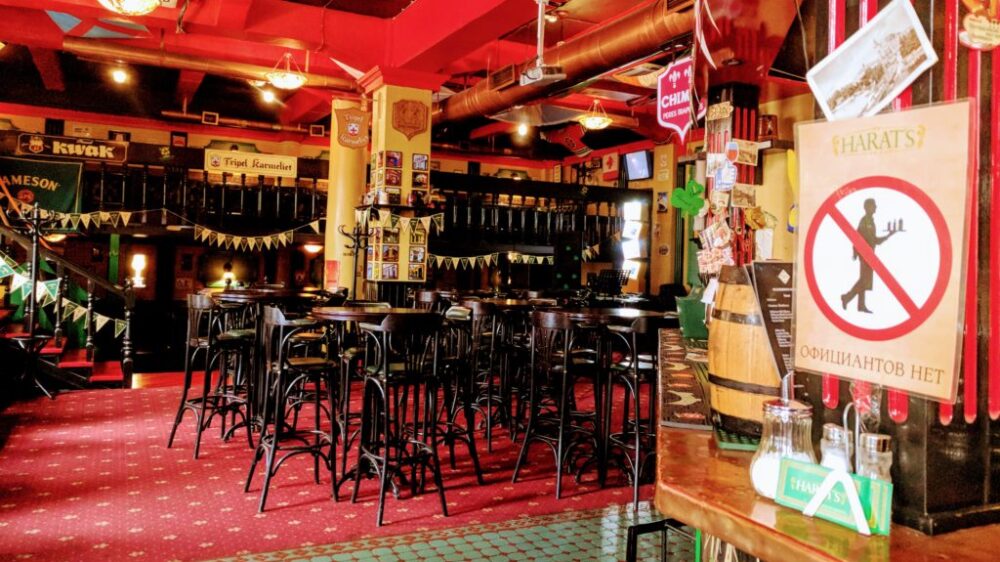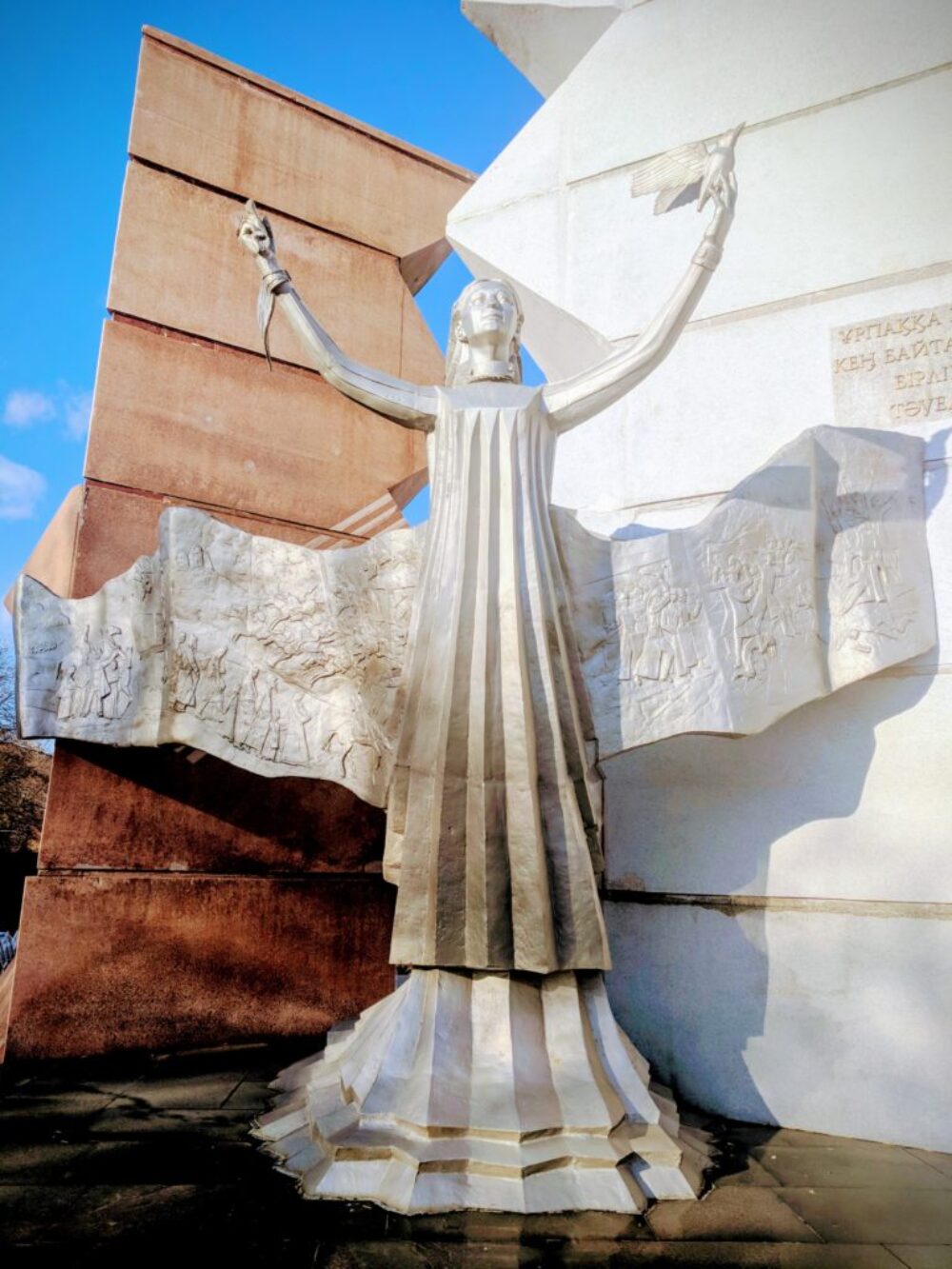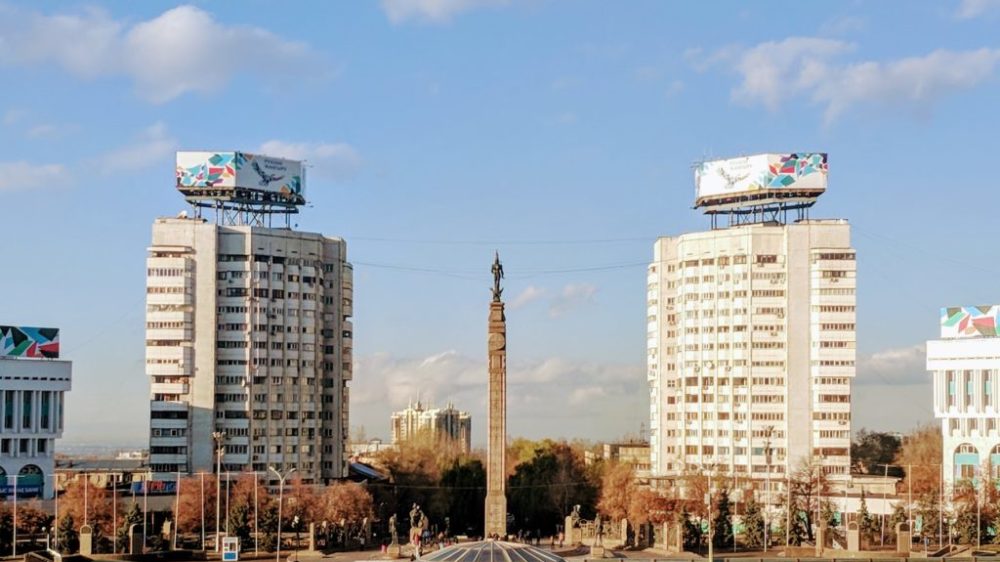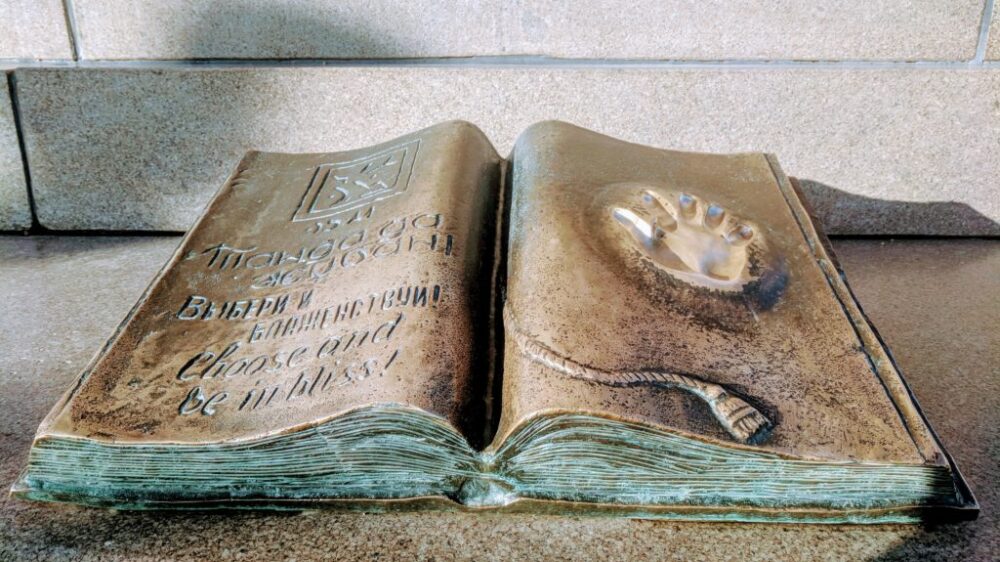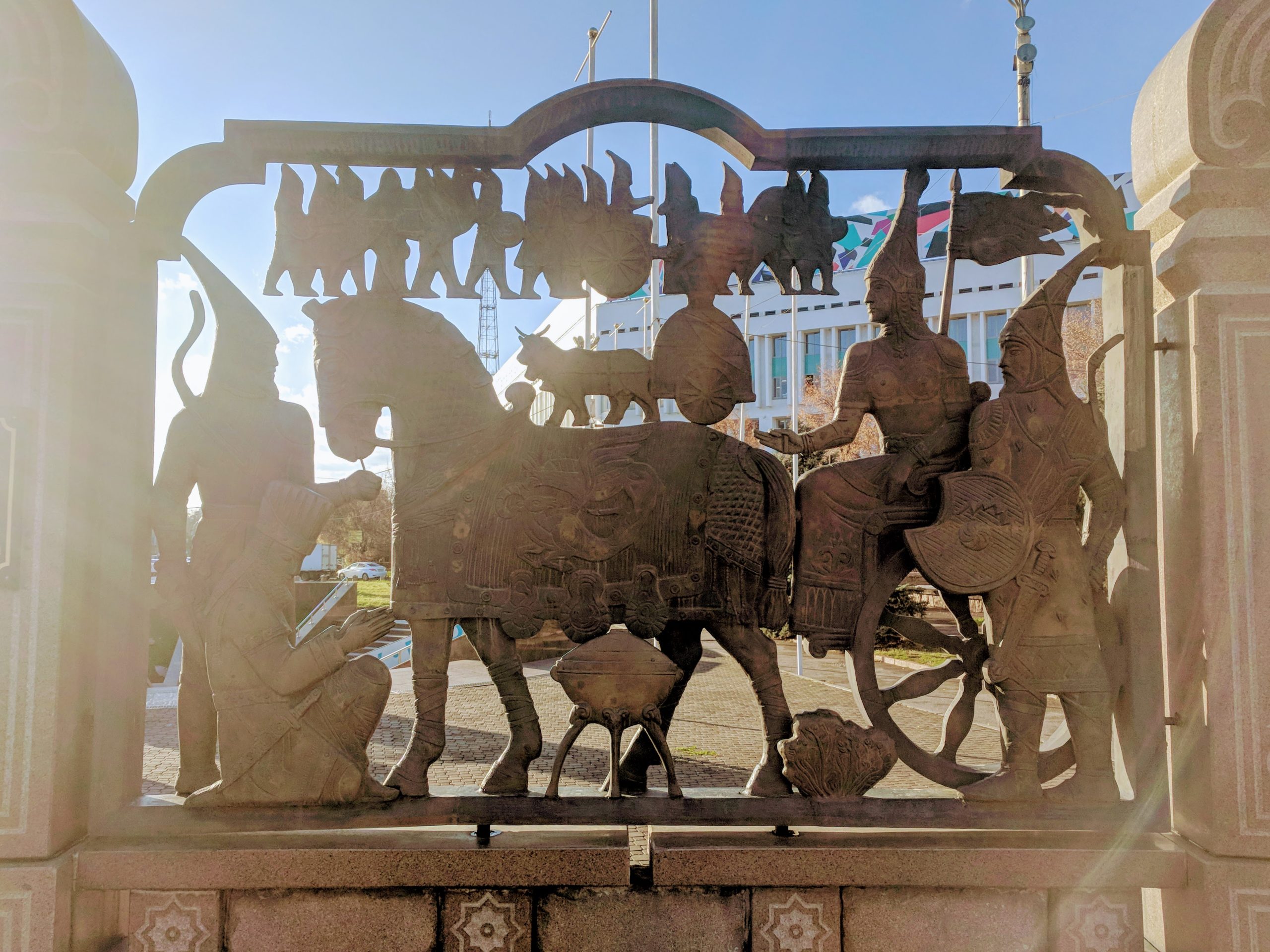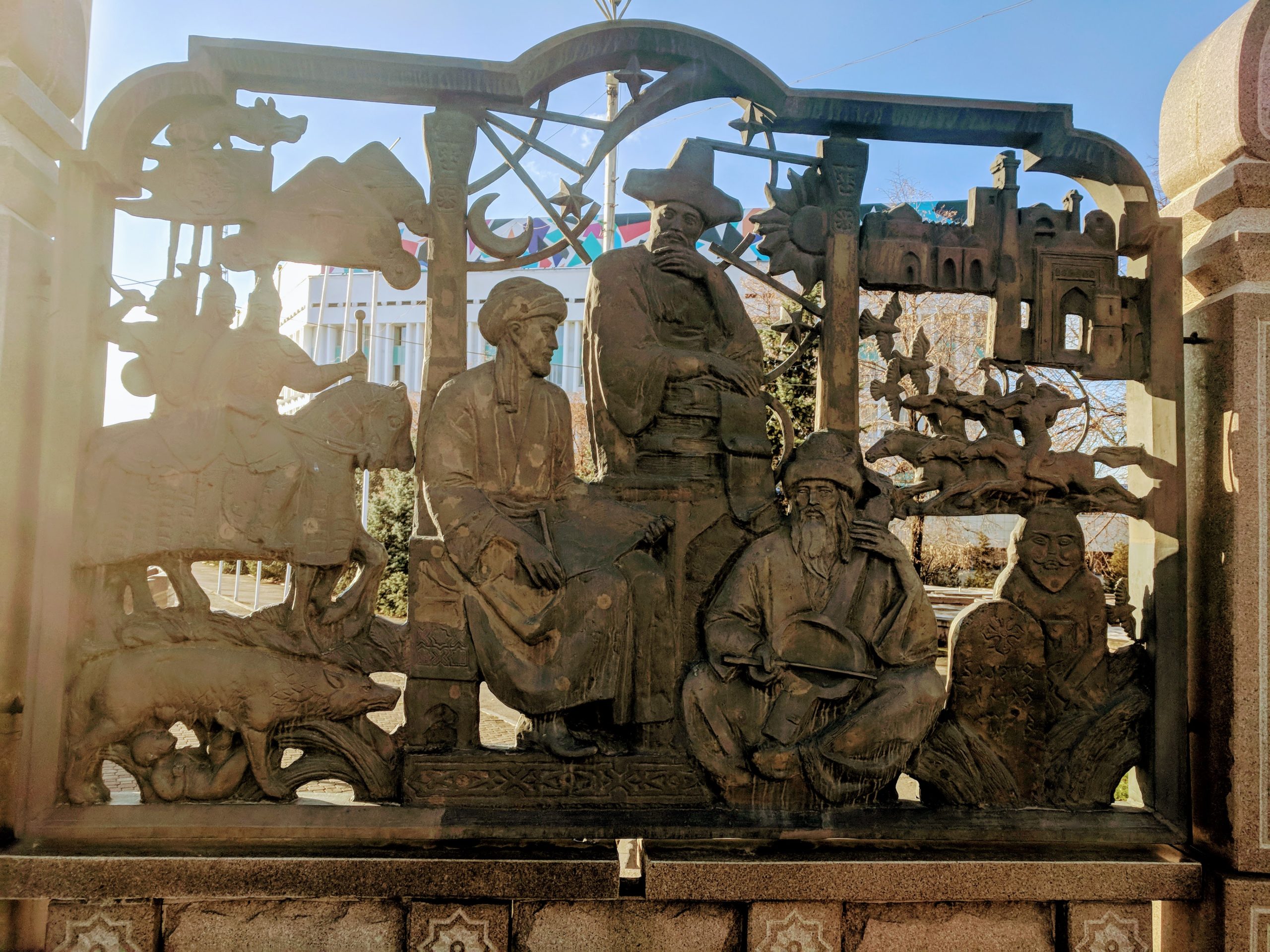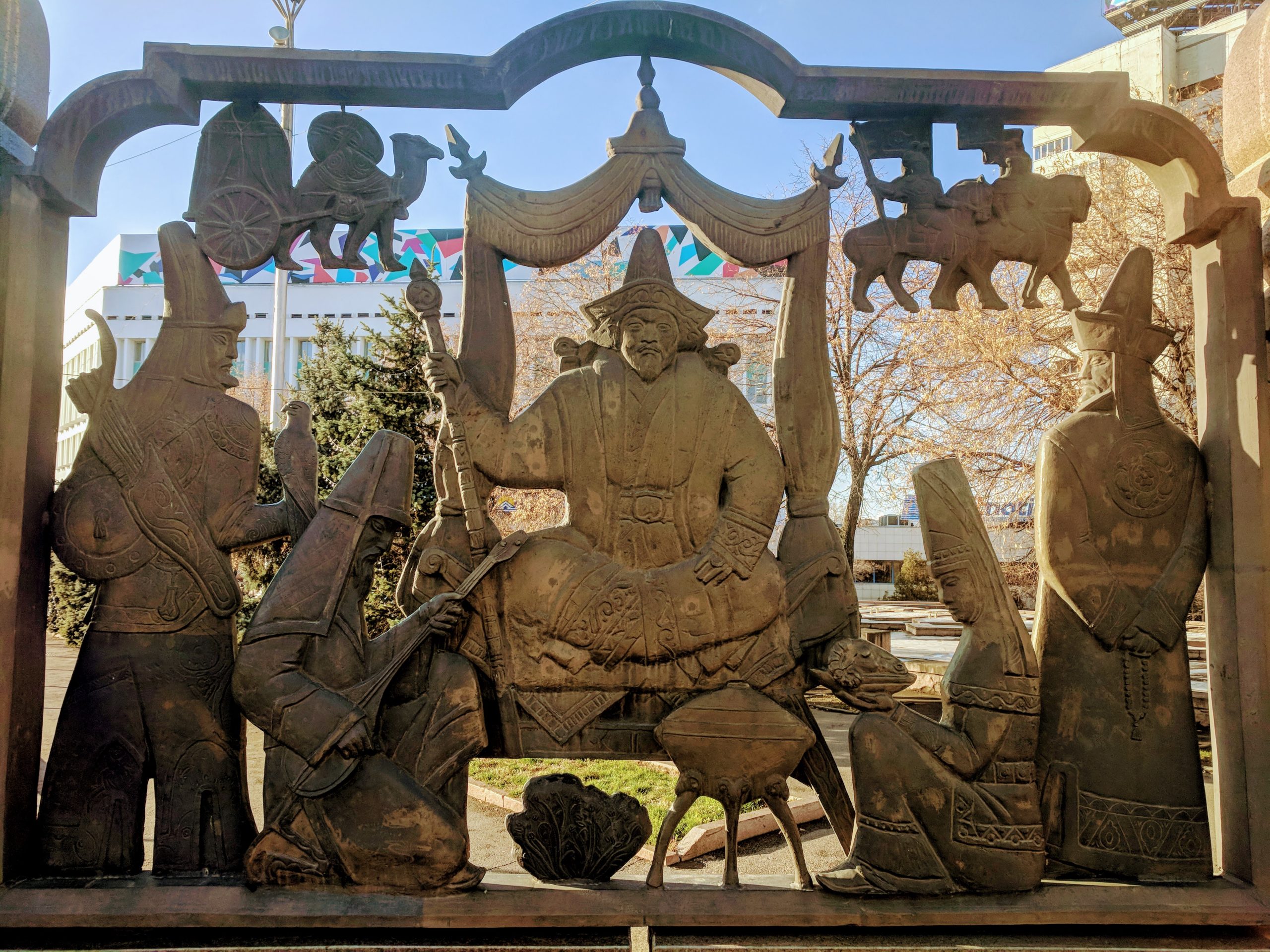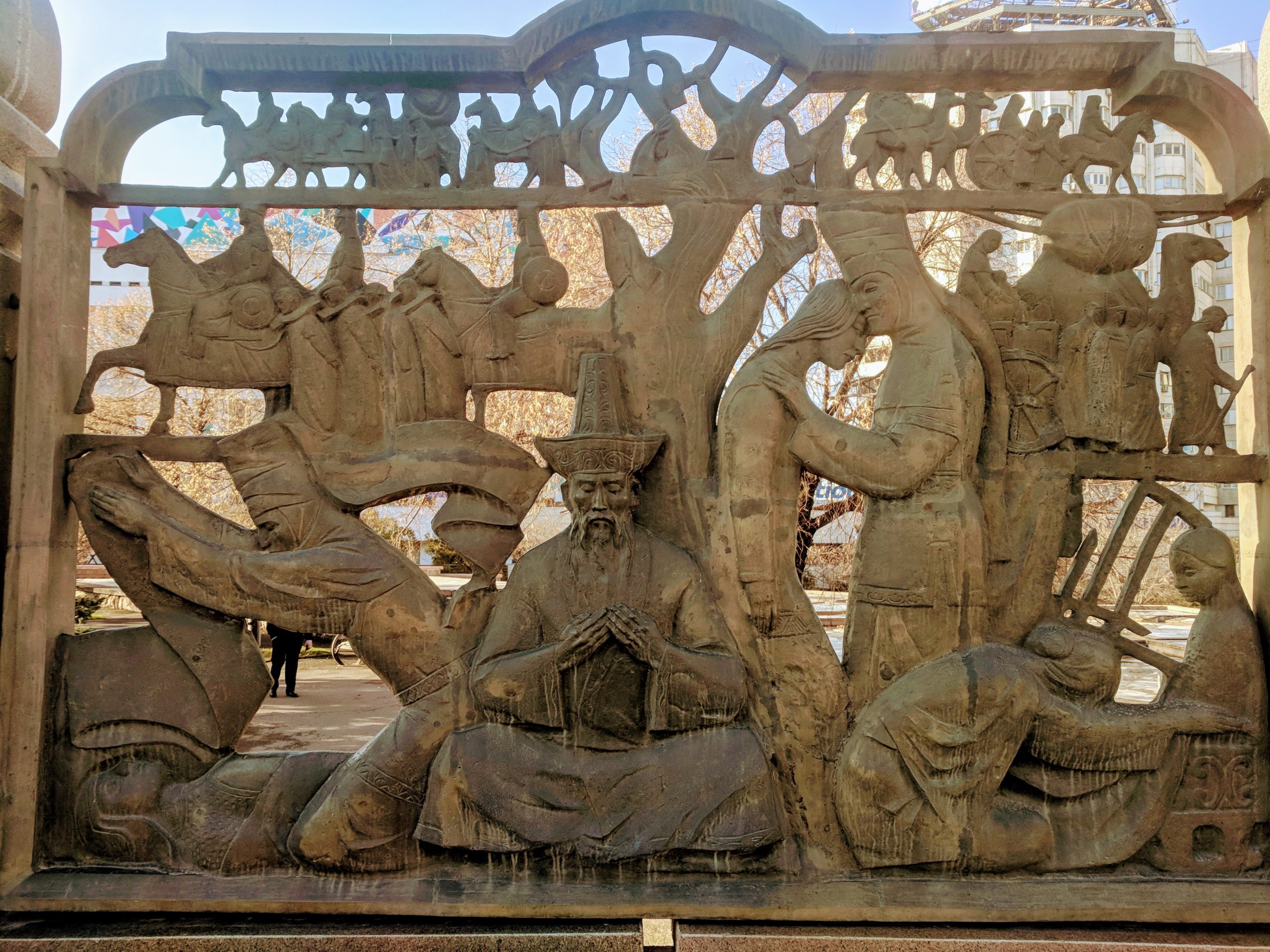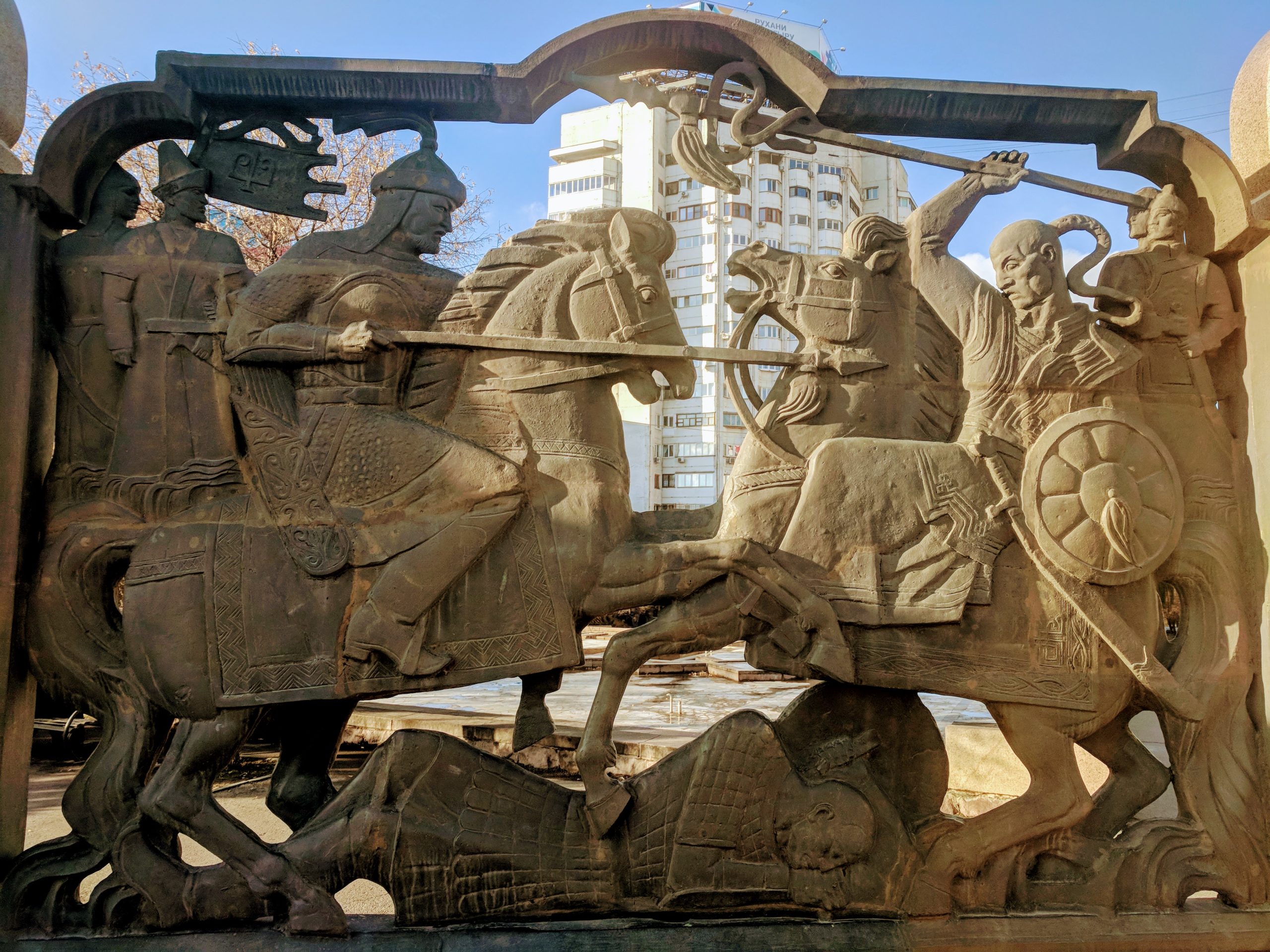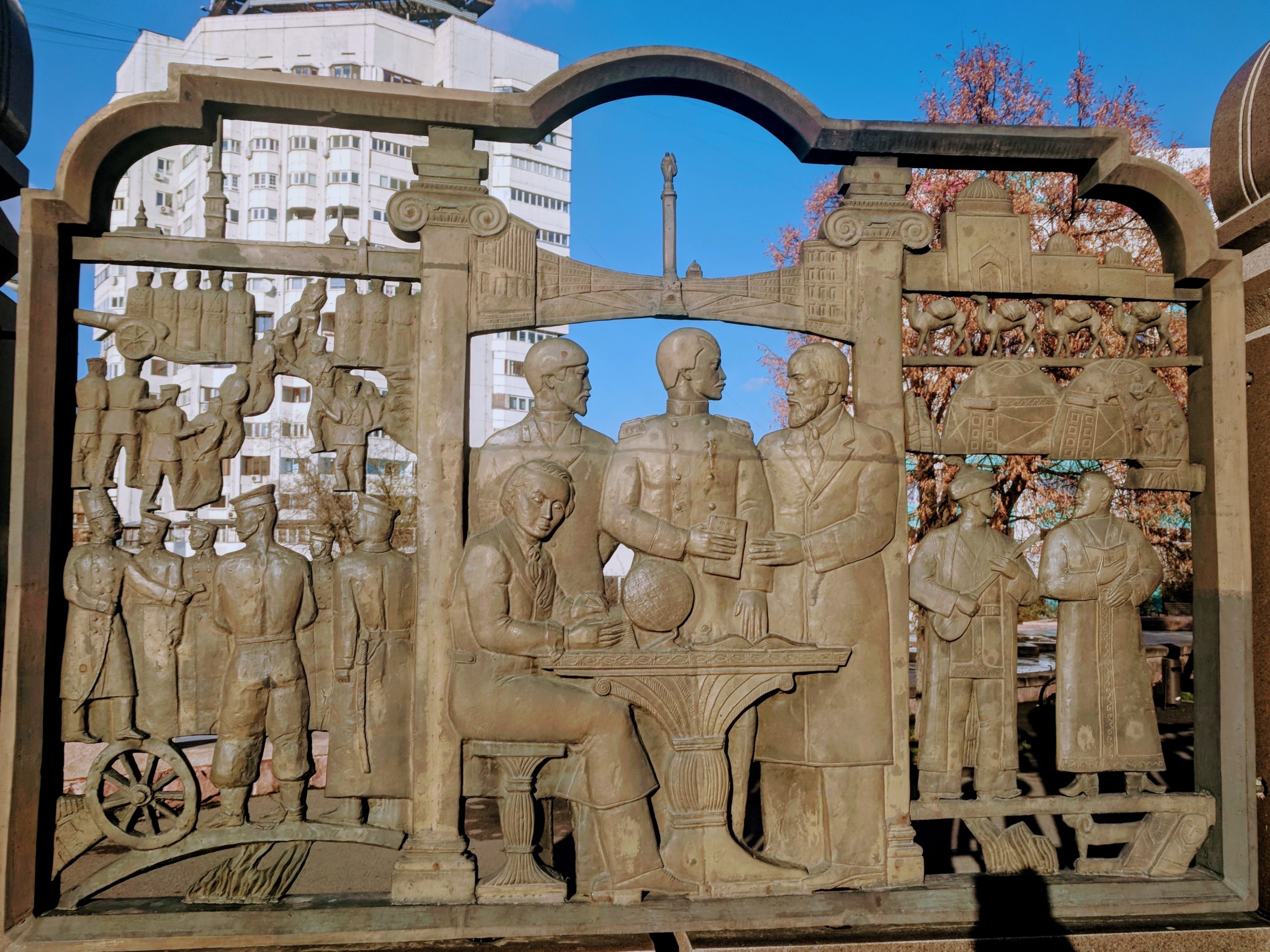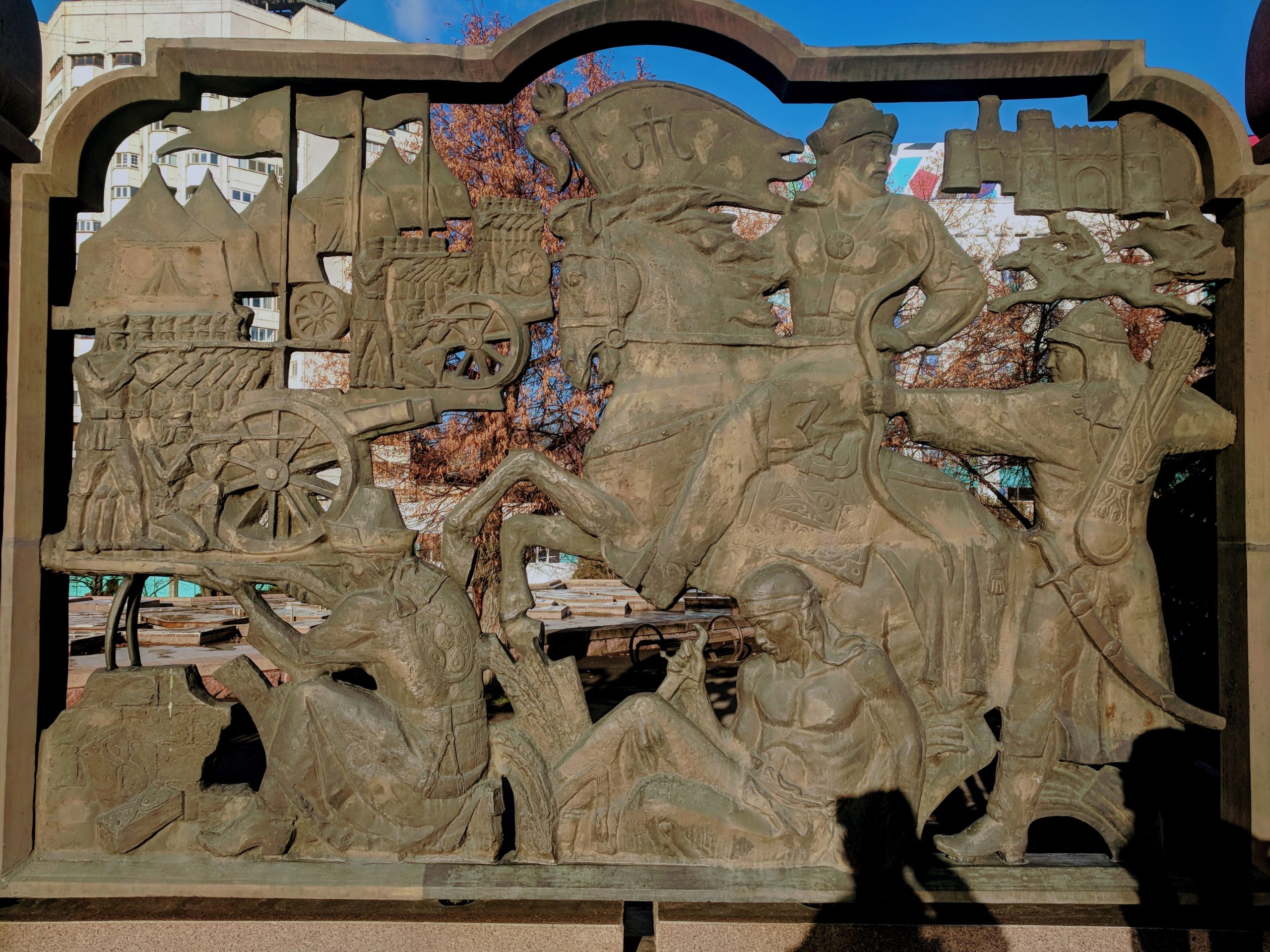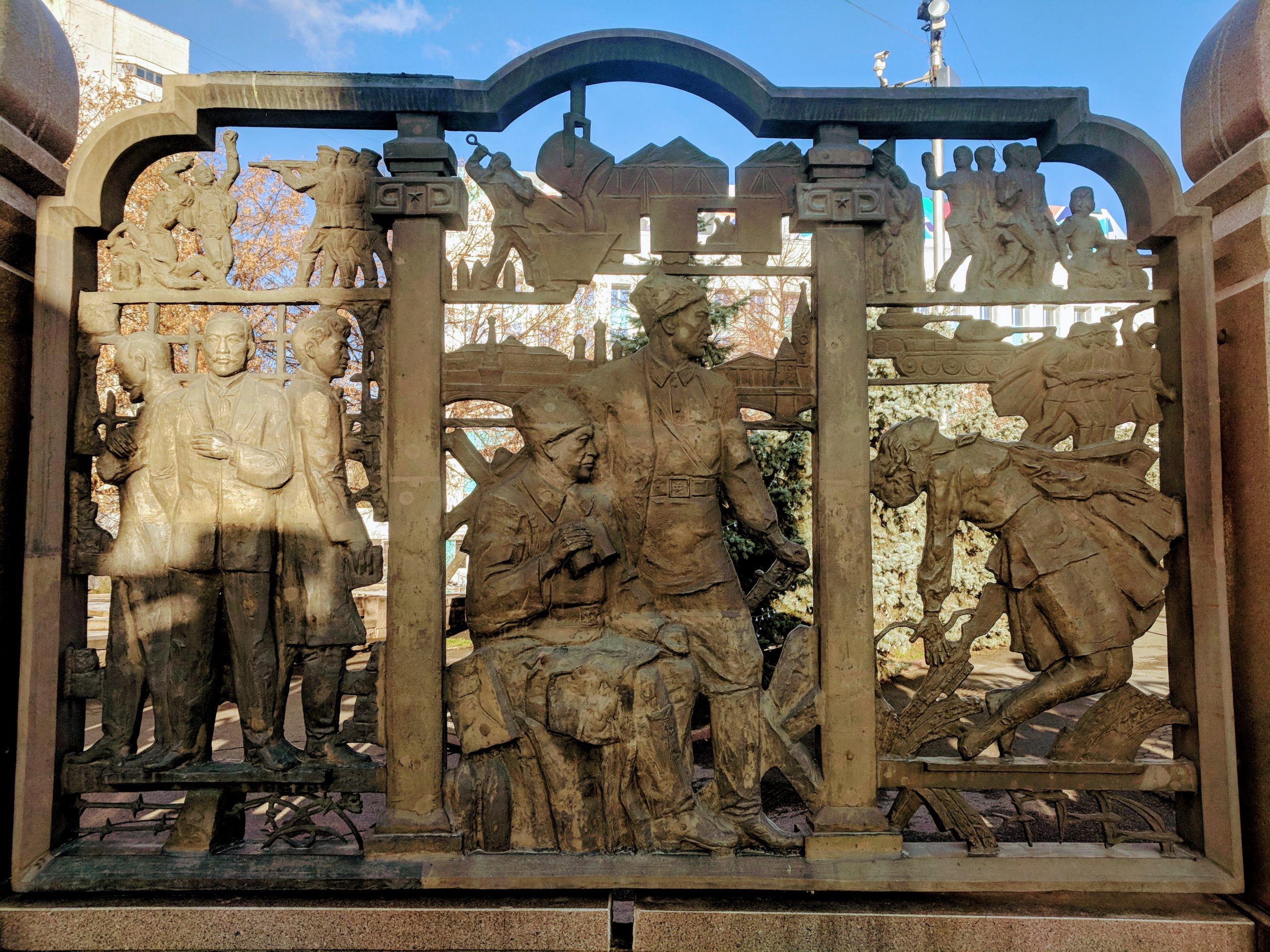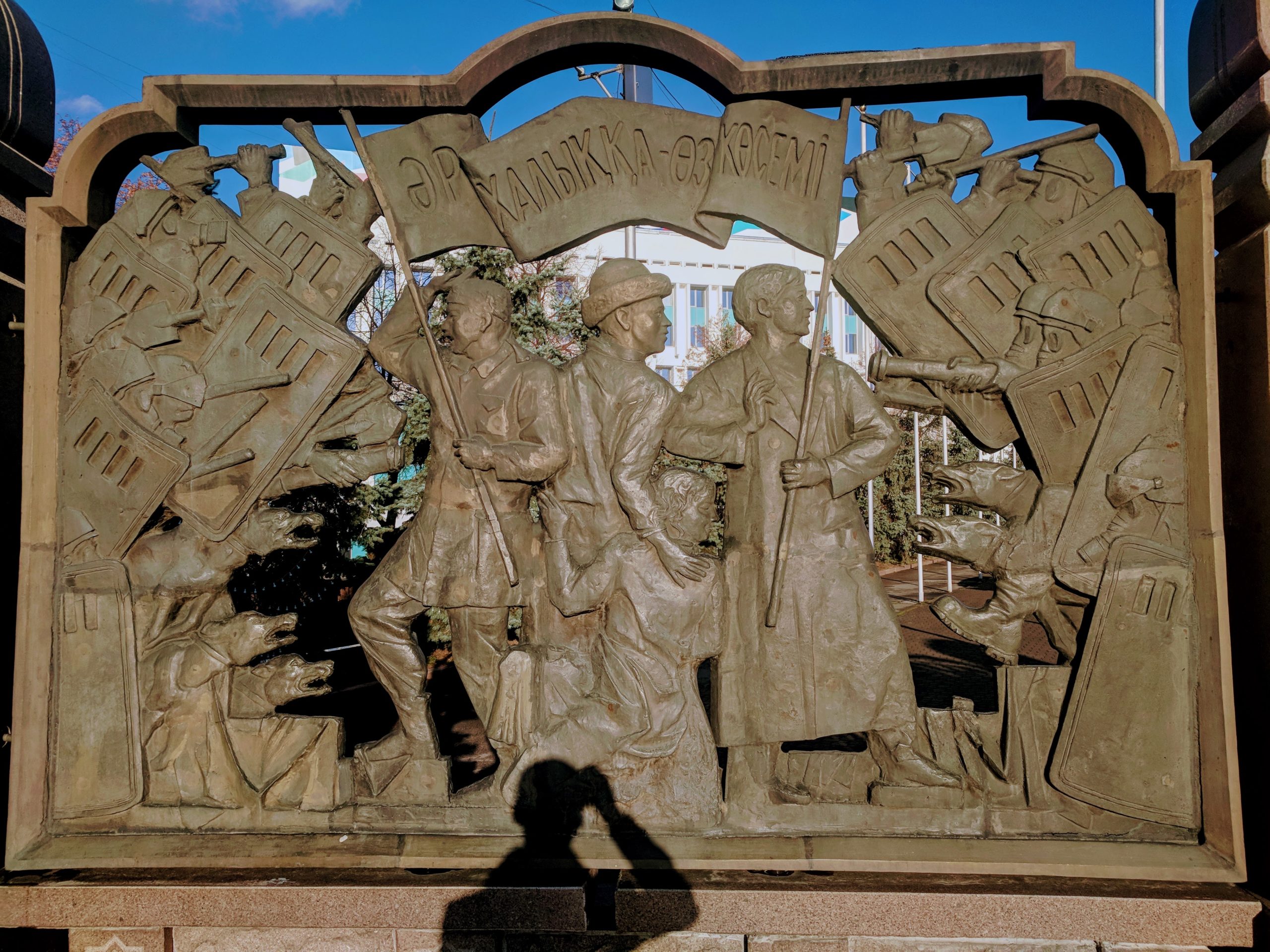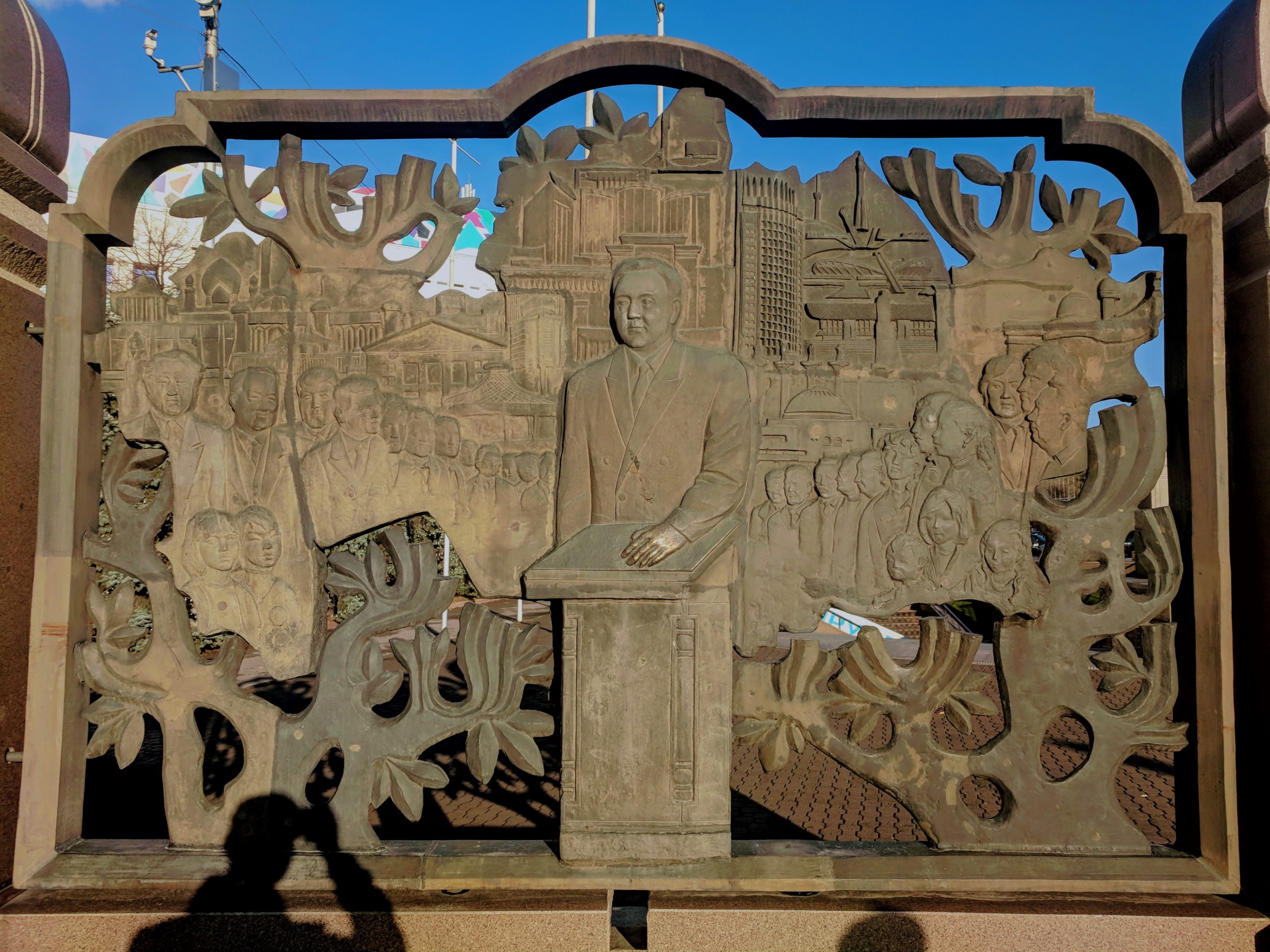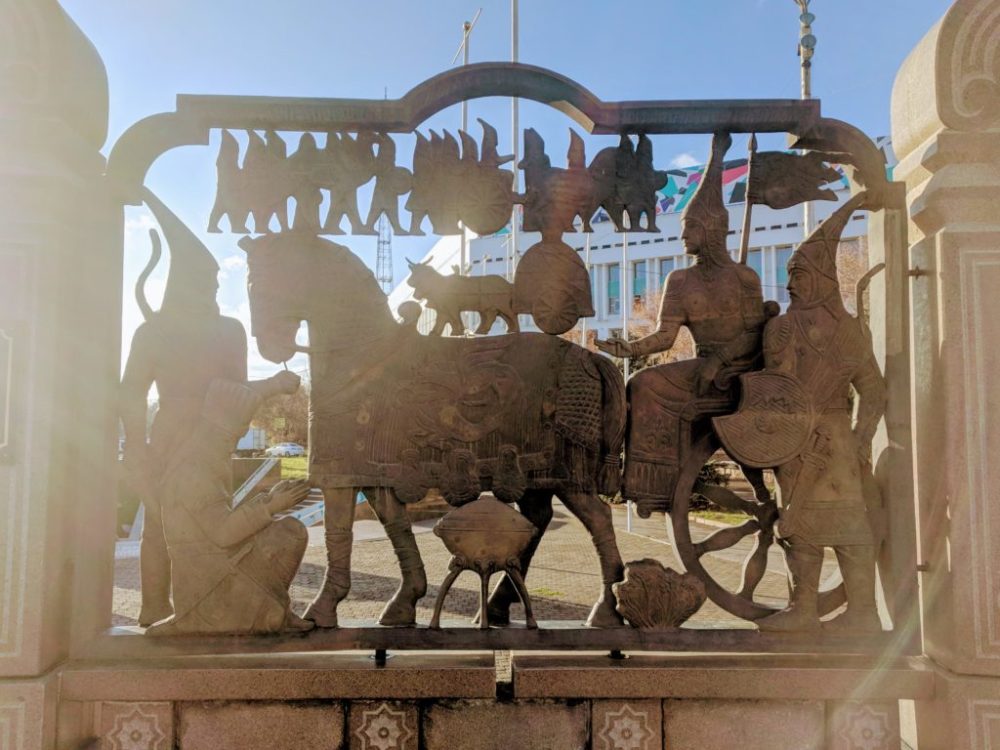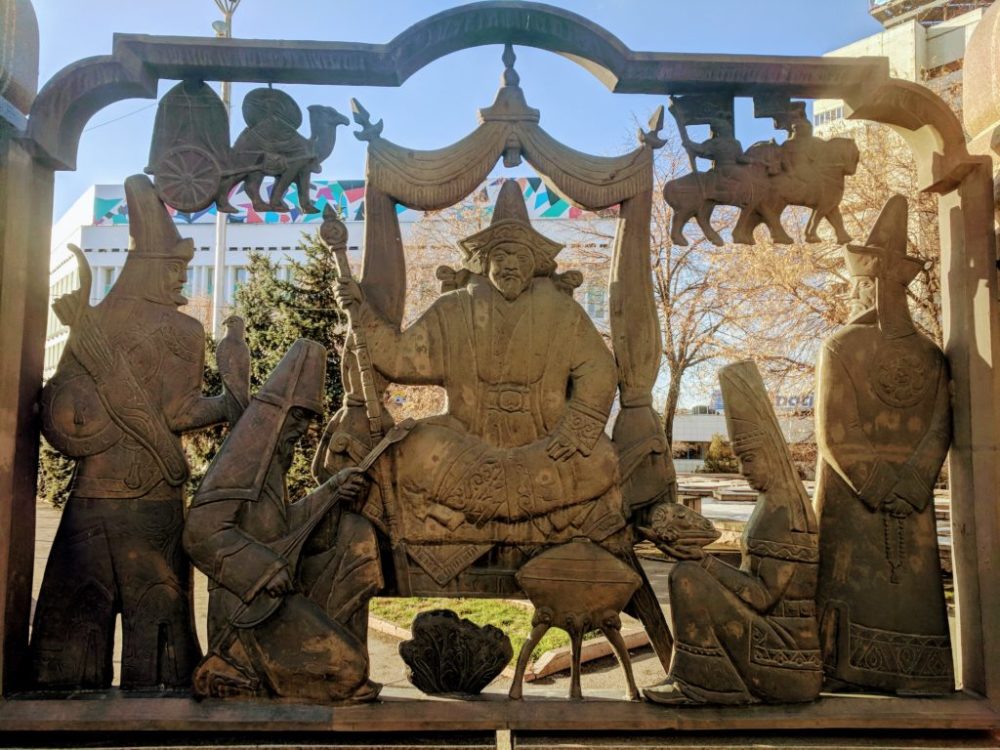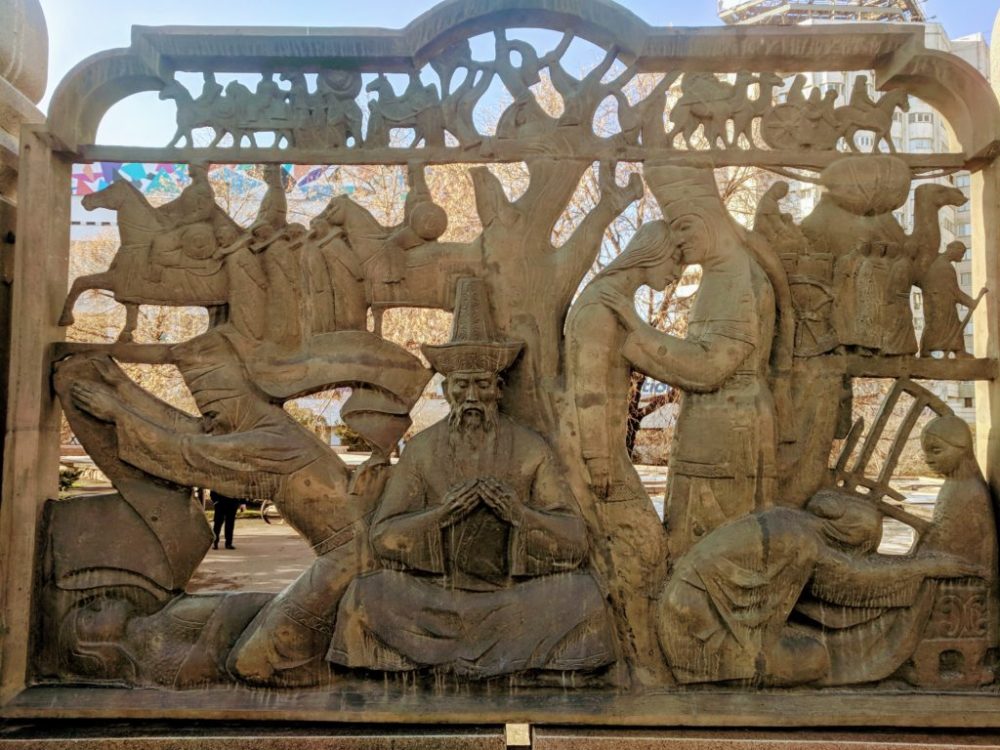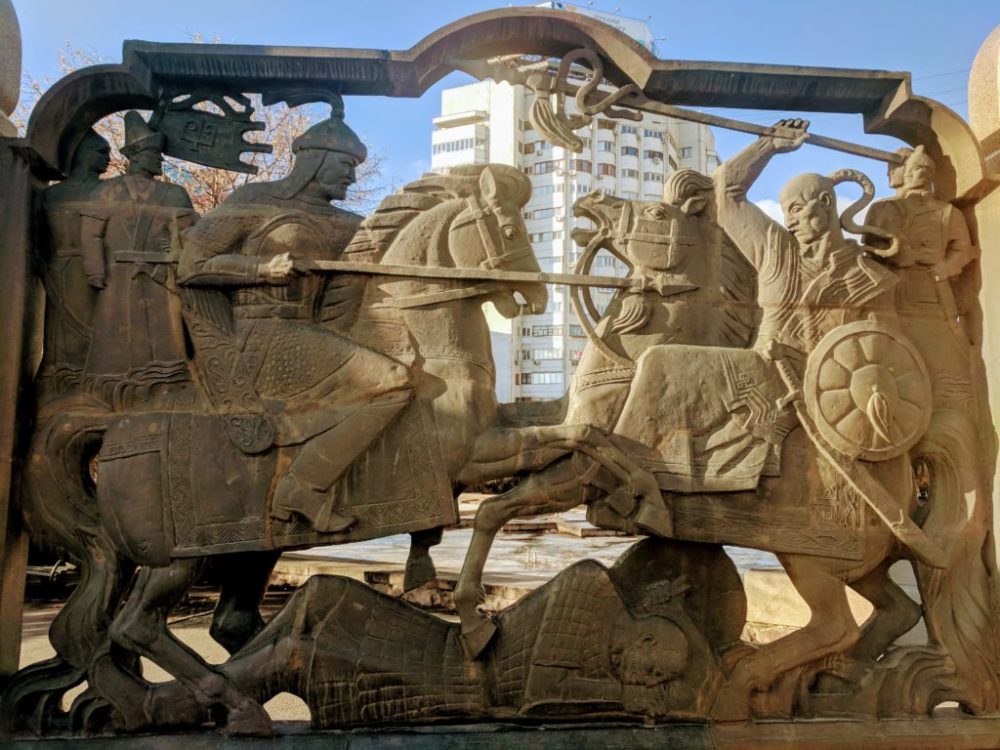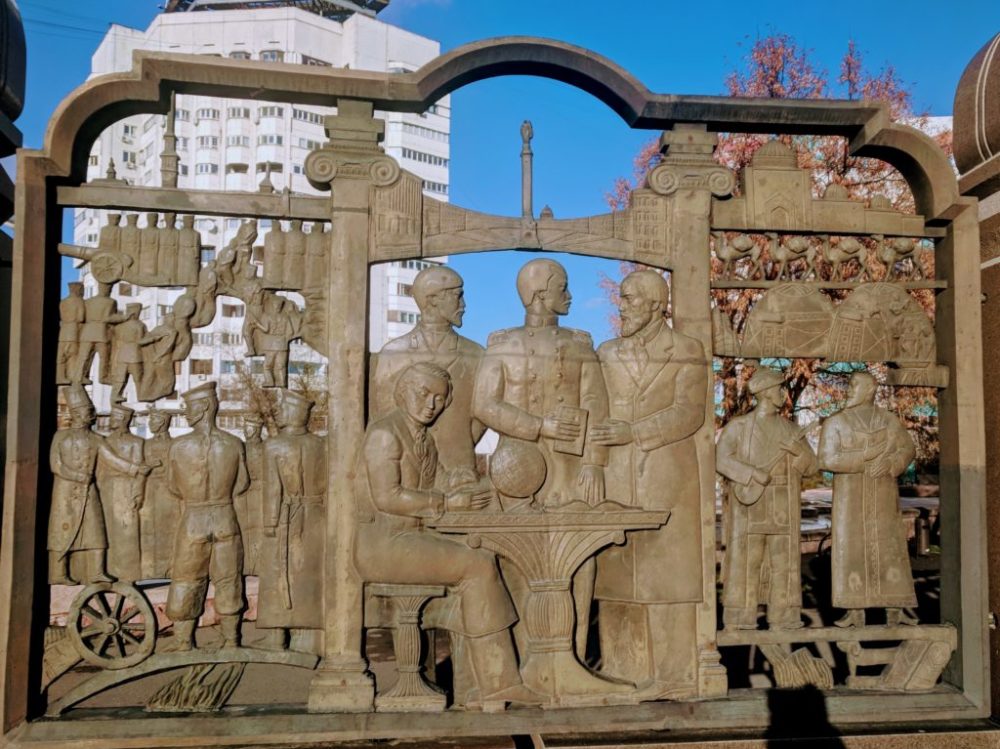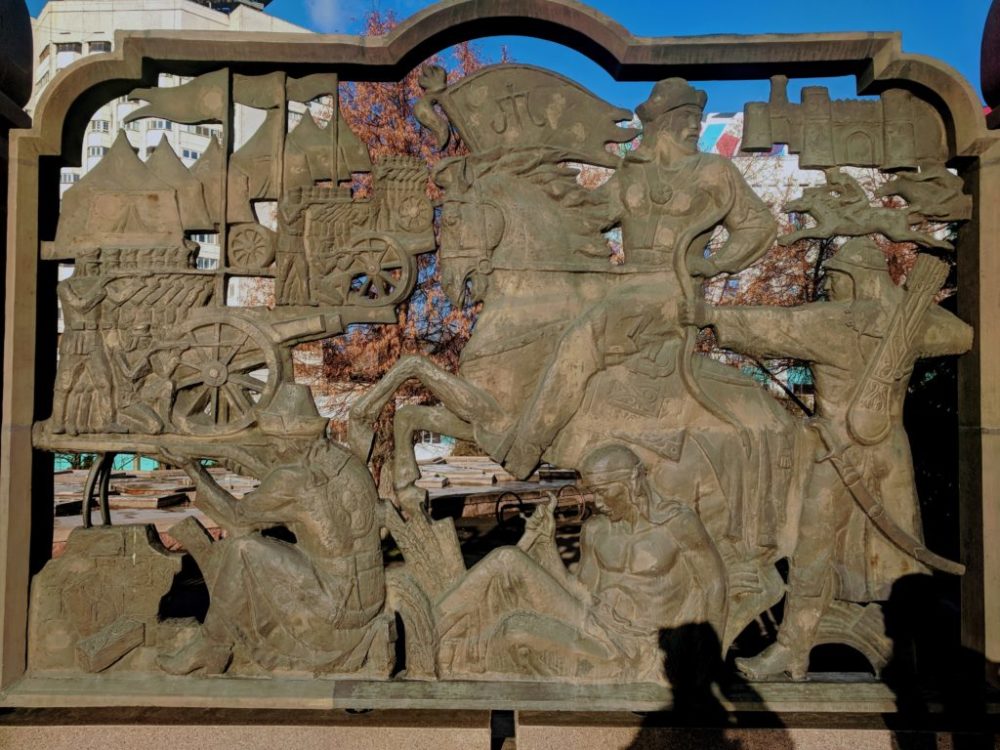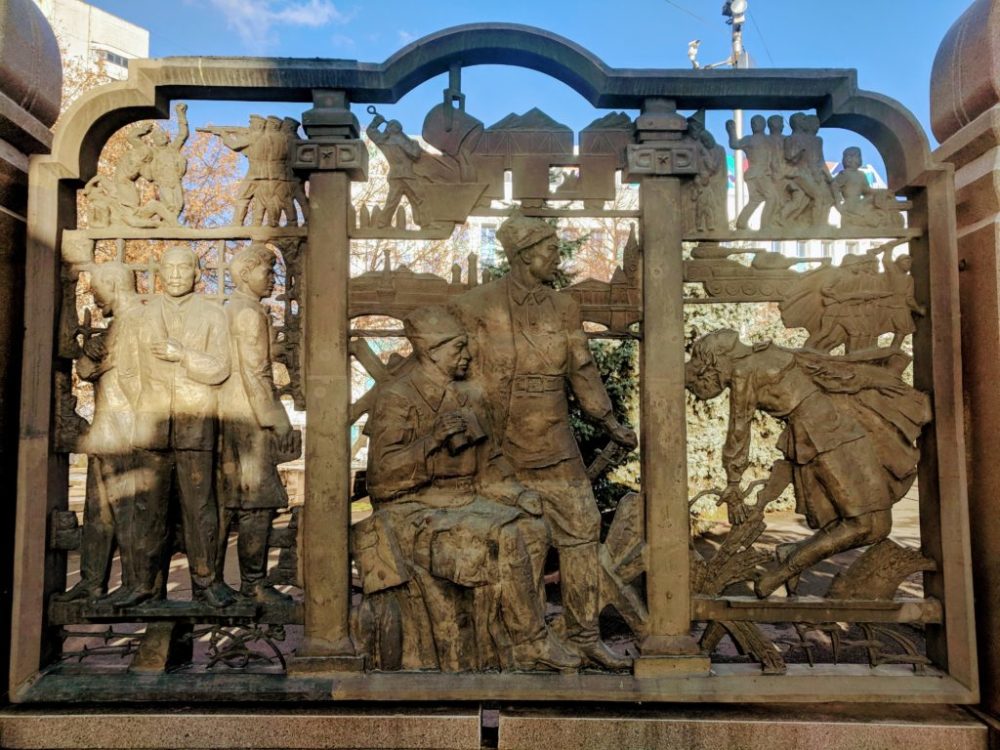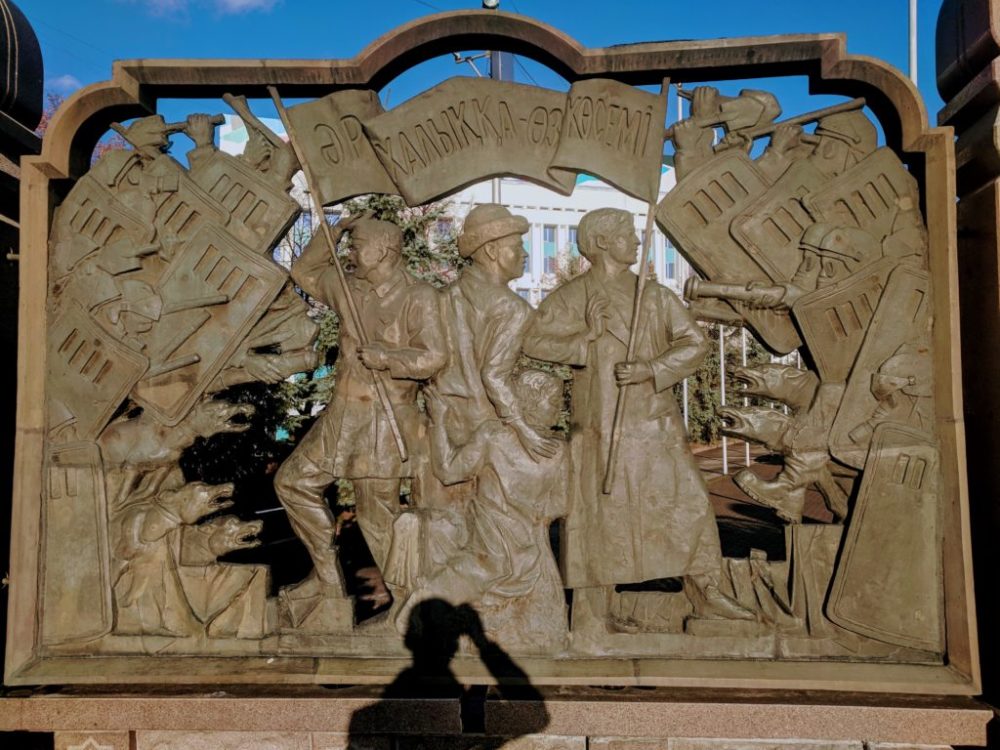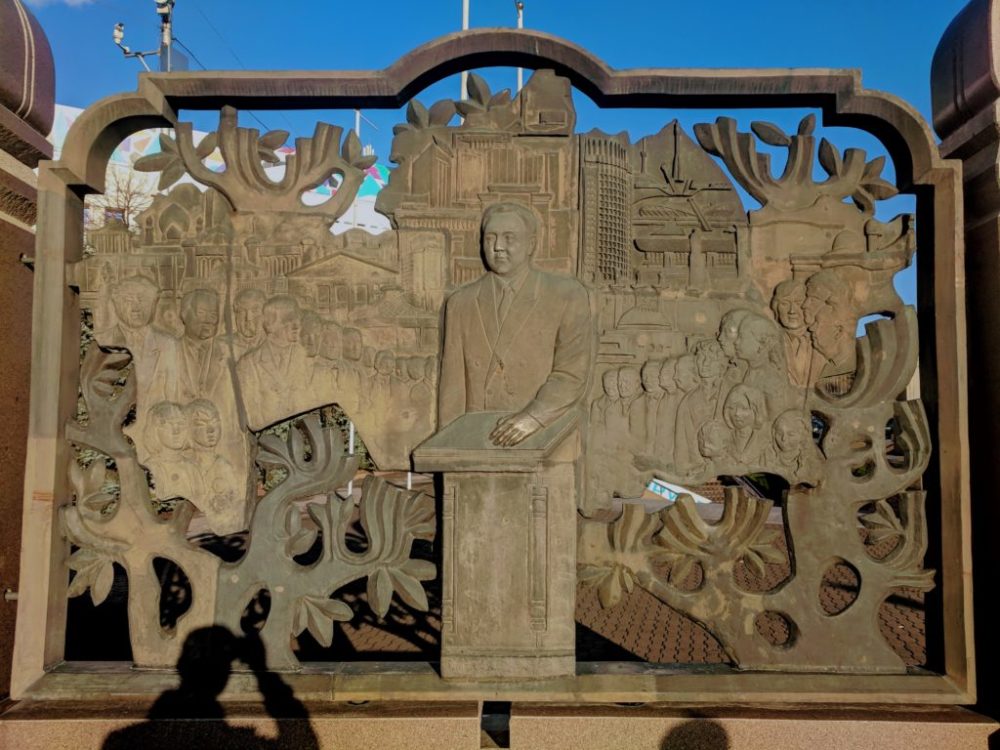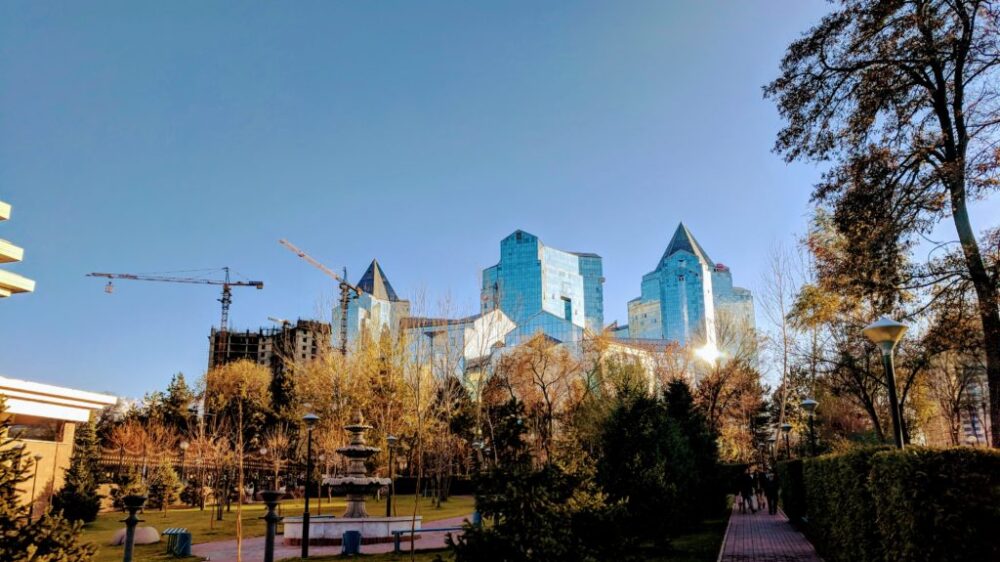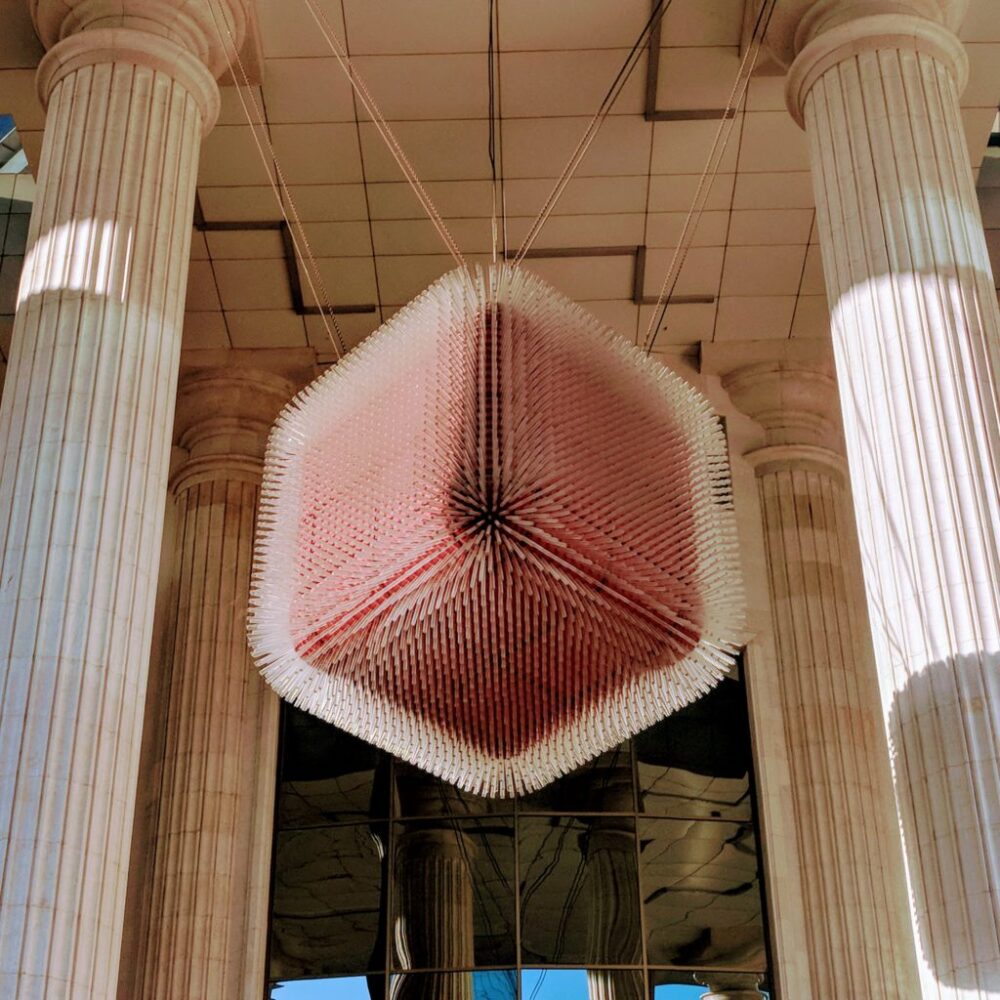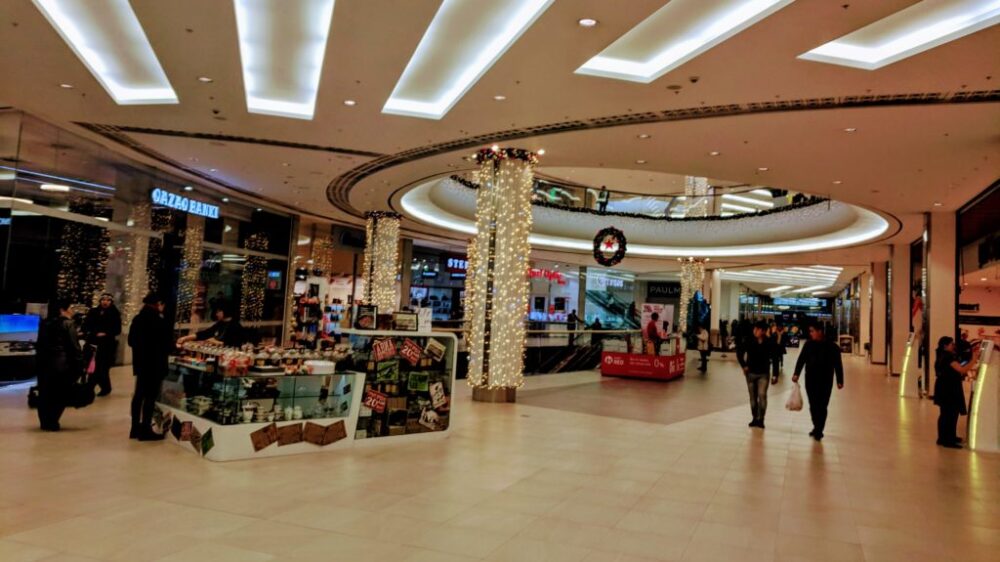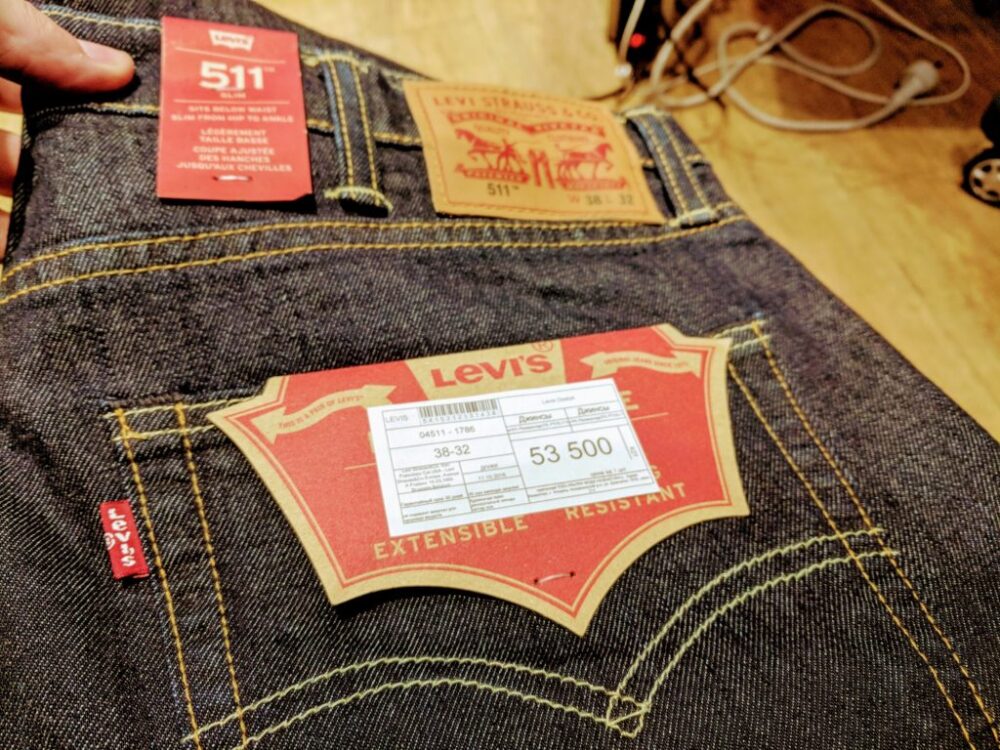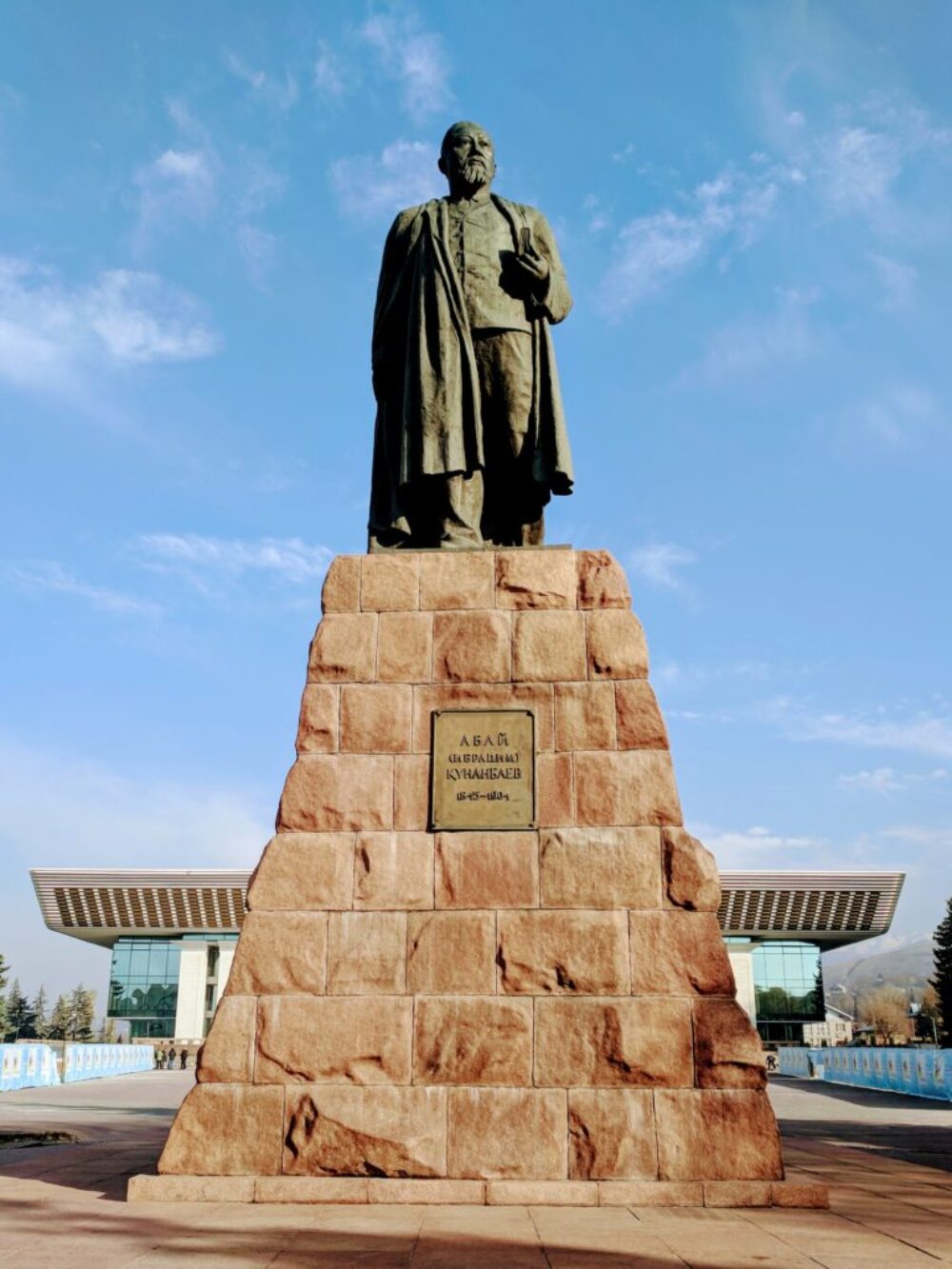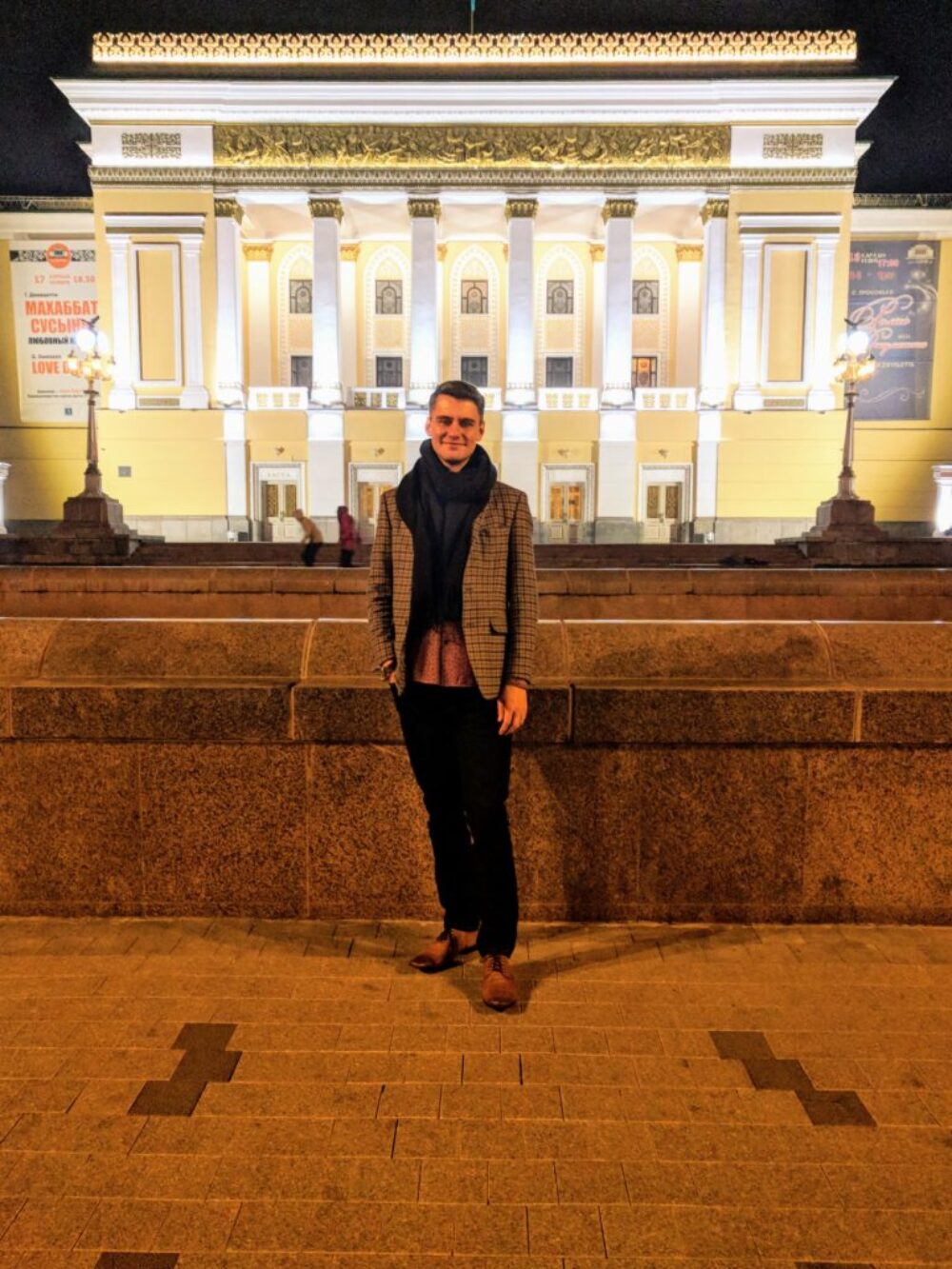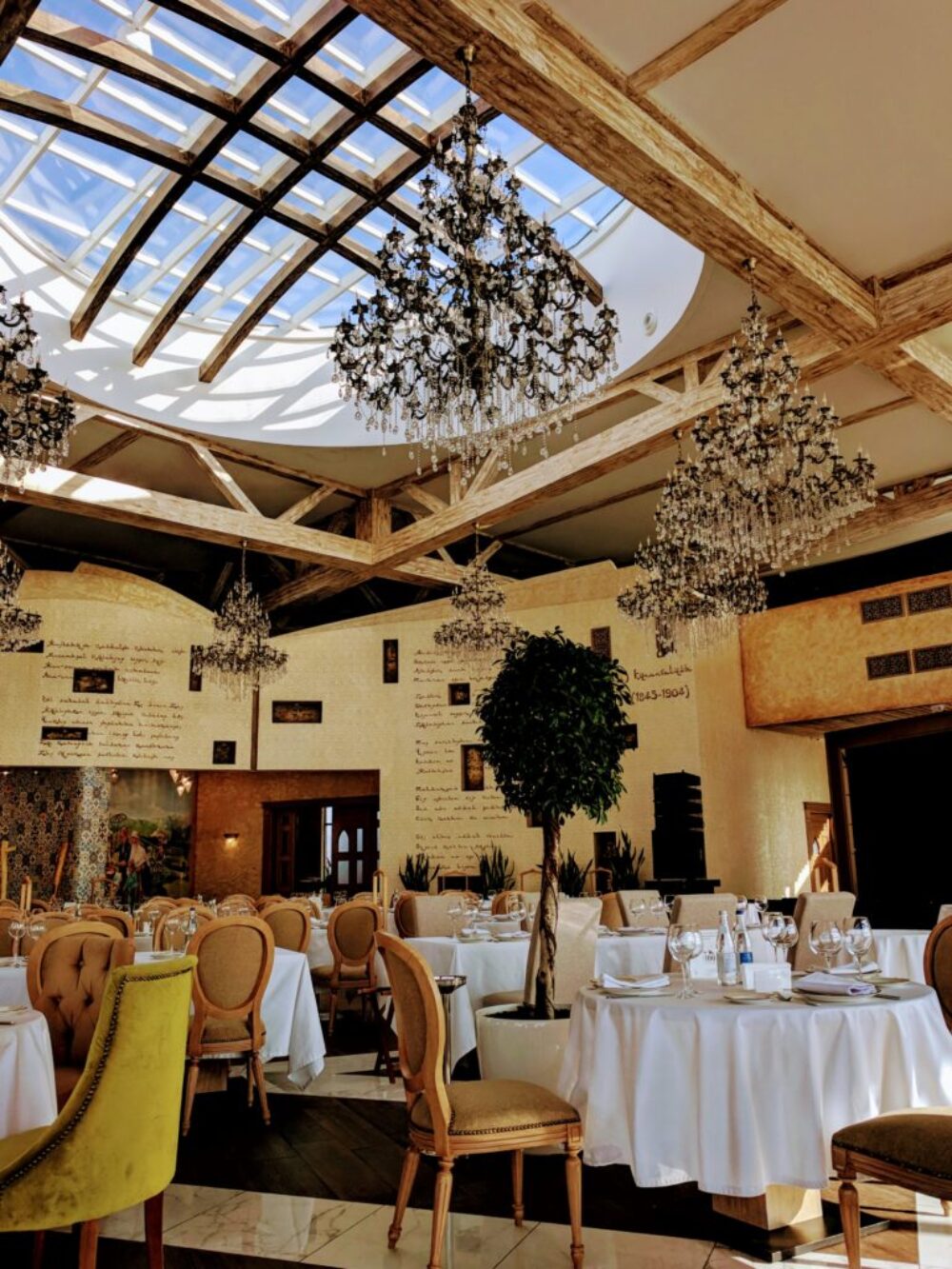I WENT TO KAZAKHSTAN
In November 2017, I traveled to Almaty Kazakhstan on my own.
It was equal parts intimidating, wonderful and strange.
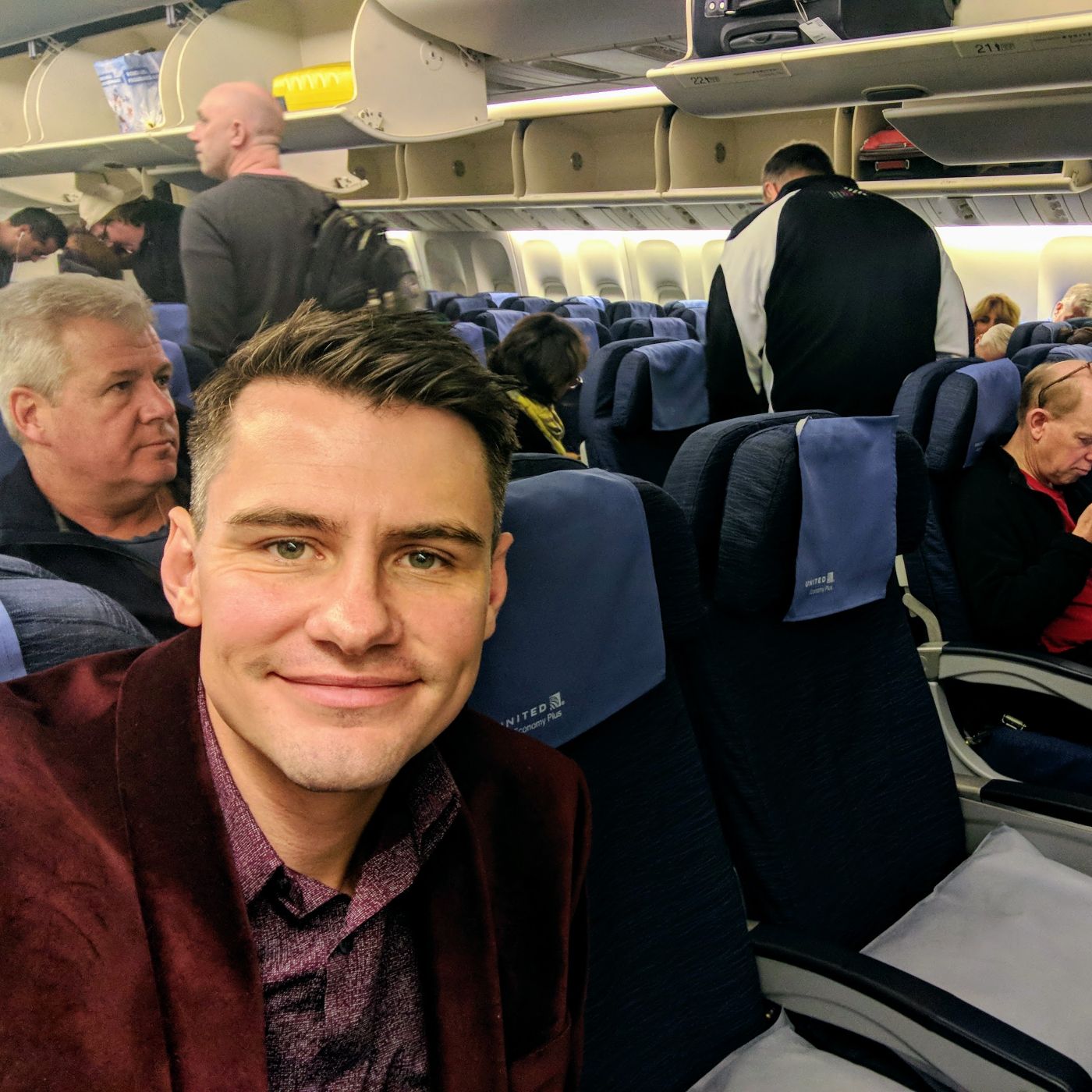
In 2015, I went on a Tinder date with a beautiful, spirited and brilliant young woman from Kazakhstan. I fell for her quickly, but due to my own personal failures, our courtship did not last for very long. But I was never able to shake the desire to go to her country someday.
Ever since I have been fascinated about the place. Having in September made a new friend that lived in Almaty, I decided to finally go! I left alone, armed with little more than some very rudimentary Russian, a quite favorable exchange rate and many hours of reading history and trivia about the region.
Visiting Almaty was an unforgettable experience.
The Original Big Apple
Almaty has had many names over its roughly 3000 years of continuous settlement, including Verniy, Almatau, Alma-Ata, Almatinsk and now Almaty.
All of these names (it was known as “Verniy” under Russian Imperial rule in the 1800s) mention apples in one way or another. This is because the region has always been known for its apples and for its mountains–these features have defined the region for its entire history. In fact, the primary ancestor for all apples is from this region: the genus malus sieversii.
And so, it is fair to declare Almaty the original “Big Apple”.
Almaty was, indeed, an important major culturual and trade nexus for centuries. The area experienced continuous development for over 1000 years, even developing plumbing around 1000 AD. The city continued on its trajectory until the decline of the silk road through the 18th century, of which it was a major trade hub. The region’s fate was further tied to Russia through its integration into the Russian Empire and the subsequent rise and fall of the Soviet Union.
Following are some pictures of the city’s Central Park, which is, paradoxically, located on the east side of town. Because it was so peaceful, I must say I enjoyed it a lot more than America’s crowded and noisy equivalent.
- Translated literally, “Central Park of Rest”. I suppose it is implied in American English that a park is a place to relax, but I cannot comment on the context in Russian or especially Kazakh.
- Kazakhstan’s nomadic history and its people’s close relationships with horses endures in its art and culture to this day. The importance of the horse to Kazakh culture cannot be underestimated. Traditional Kazakh people depended on their horse for everything–it provided their food in the form of meat and milk, clothing and shelter through their leather, transporation, companionship and strength on the battlefield.
- The Park includes a nearby zoo. Based on the facilities, it appeared they had in recent years made strides to make the animals a lot more comfortable. Next to this nicely-decorated grassy pen, for example, was an empty cage with a cement foor, which I assumed had previously housed this majestic beast.
- I’m not sure what this animal is called. It was hard to get a shot of them sitting still.
- Disney characters were very popular in the children’s sections of the park. There were rides for children, but they were all closed–I was there during November on a weekday, after all.
- A lake in Central Park with a view of the Zailiyskiy Alatau mountain range and the Kok Tobe television tower. In clear weather you have a clear view of the mountains from most south facing streets. I used this photo as my cover image as I feel it best captures my infatuation with the city’s unexpected beauty.
- Some things are truly universal.
- It was a peaceful day; as it was late in the fall or early in the winter I was almost the only person here. I imagine it would be swarming with families in the summer.
- This little guy wasn’t actually at the Almaty zoo; I caught him at a smaller zoo up on Kok-Tobe hill.
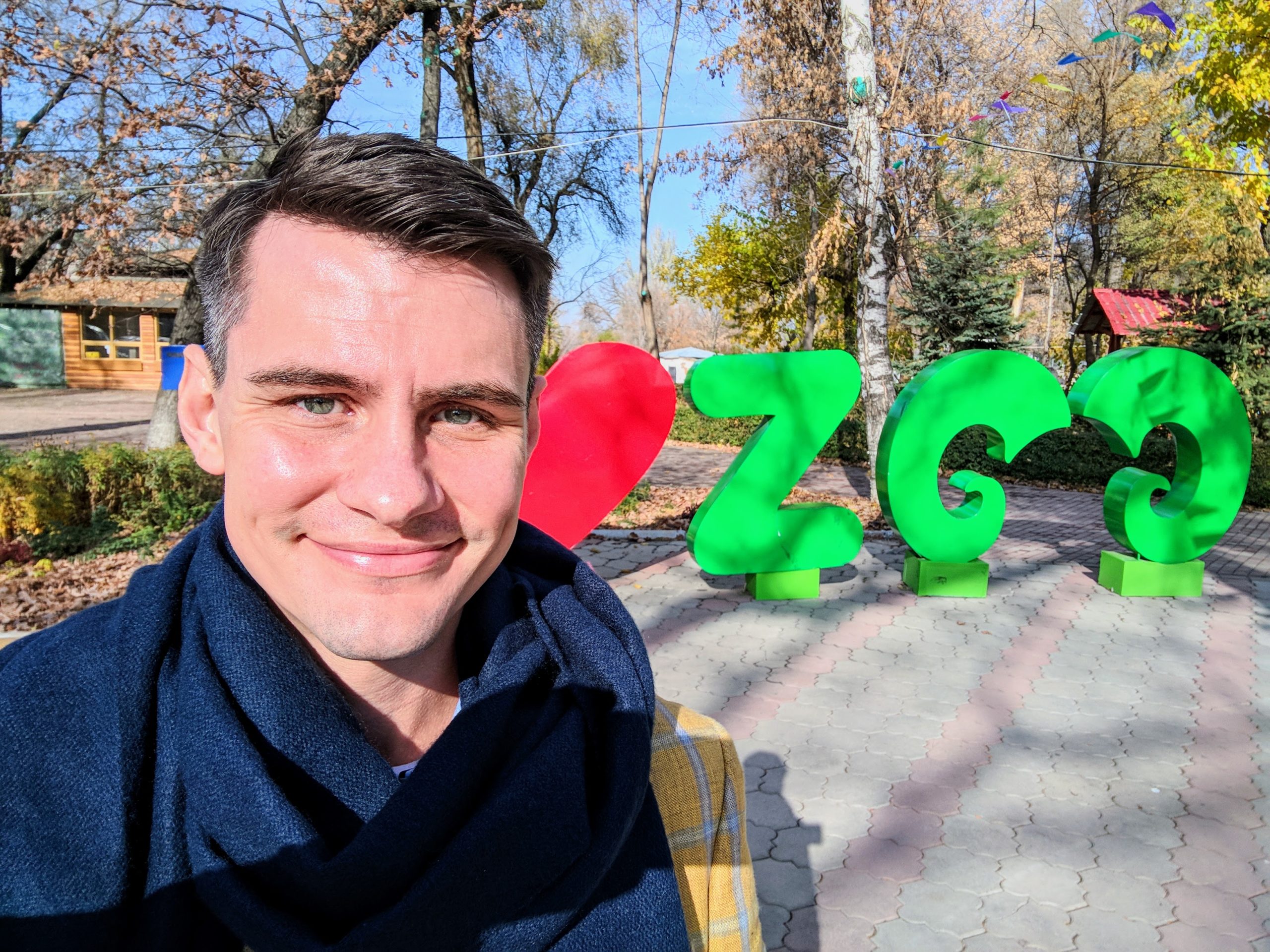
I am not much one for selfies, but I did take a few every now and then.
A former Soviet Republic
The Soviet Union was more or less perpetually at a state of war for nearly a century, and Kazakhstan, as a member, was invariably pulled into its conflicts. Throughout the city are many monuments and memorials honoring the sacrifices of Kazakhstan’s citizens in more or less foreign wars.
I was impressed by not only the bold artistry of these monuments–they are certainly a lot more visually arresting than our American counterparts–but by how they captured a spirit of honor and sadness.
As an American, I of course have always had a negative opinion of the Soviet Union. However, learning more first-hand history and the perspective of people from one of its member republics has made these feelings more personal.
- The World War II monument at the park of 28 Panfilov Guardsmen. It commemorates 28 Kazakhstani guardsmen who defended Moscow from German assault in World War II. The style is absolutely striking. The statement, in Russian, roughly translates to "Great Russia, there is nowhere to retreat to behind Moscow!" And so you see the guardsmen protrayed as a literal stone wall with nowhere to retreat behind them. This monument is set right in the middle of Panfilov Park in the busiest part of the city center and arguably one of the most important displays in the nation. In the summer, they routinely host public events and concerts here.
- It is customary to lay flowers at the monument before an eternal flame. It was raining the day I visited, which seemed thematically appropriate. Though Western education and entertainment make much of America's role in World War 2, this part of the world will never forget the horror of the Eastern Front between Axis and Soviet forces, where over 32 million people died--most of them civilians in the Soviet Union.
- A memorial to the Soviet-Afghan war and the people of Kazakhstan conscripted to fight in it. Those who died have their names listed. I related this story--and its memorial--to United States involvement in the Vietnam War, where young men were drafted to fight in a foreign war for an unpopular cause they neither supported nor understood. The monument truly captures a sense of resignation and hopelessness.
- A memorial for Aliya Moldagulova and Manshuk Mametova, two women remembered as heroes in World War II and posthumously awarded the title Hero of the Soviet Union, the highest distinction given in the USSR. Moldagulova was a fearsome sniper with 91 confirmed enemy kills, and Mametova was a machine gunner who single-handedly killed over 70 enemy combatants in a desperate last stand against German Wehrmacht forces.
Around Town
I spent a great deal of time simply wandering around the city and enjoying its sights, food and people. By night, I would find myself in restaurants, bars and night clubs open until all hours of the morning.
The city has a lot to offer–and a lot for one to learn–depending on where you go and how much attention you’re paying. It has a rich history on display in its monuments and memorials and several decent museums.
Like many modern cities, Almaty displays deep poverty and extravegant wealth side-by-side; its streets are clogged with 35-year-old Soviet-era diesels alongside brand new Lexus SUVs. Near the mountains on the south part of town, people live much better than further north or west (locals refer to “up” and “down”, meaning in relation to the mountain, so I never understood anyone’s directions).
However, a universal truth to the people of Almaty, as far as I encountered them, is that they were enthusiastic, helpful and kind to me. I felt safer in a poor neighborhood alone at night than I do in most American cities.
- The city's logo. Note the stylized apple and Latin script. Kazakhstan recently enacted a bold 8-year plan to convert its entire language from the Cyrillic (or the "Russian" alphabet) to Latin (or "European") alphabet. I am not sure if things like this logo showcase this movement consciously, or whether they are just part of the same trend.
- From my estimate, up to 1/4 of the city's prime downtown real estate is devoted to walkable paths like this one. This is a major street! There truly are trees planted everywhere.
- Coffeedelia, a bustling staple of Almaty. Like other coffee houses in town, they have about 100 things on the menu, much of it a variety of western food like sandwiches and pizzas.
- Almaty had a far nicer train system than any I've ever seen in the United States (though, admittedly, we aren't known for the quality of our public transit). For a few cents I could get from one end of town to the other in a brand new, comfortable train. I heard from locals that this was a troubled public works project for quite a long time. All the same, I was grateful to ride it.
Western Coffee Culture
Some of the most popular and fashionable places in the city are western coffee shops, complete with acoustic covers of popular western top 40 hits. In fact, three young professional women living and working in the city all independently recommended the location featured here, Coffeedelia, to me.
Almaty seems to have a small but growing coffee culture, where most people traditionally prefer tea. The coffee shops are all distinctly western in style, with American or Italian-sounding names and menus in English. Drip or pressed coffee is not available–only espresso–but Americano is popular. I felt particularly self-conscious ordering it, especially when servers would look at me like a lunatic for ordering it without milk or sugar.
- I visited in November, so even at noon the sun hung low in the sky. Because the city is situated north of the Zailiski Alatau mountains, daylight hours in the city are even shorter than normal during the fall and winter as the sun slips out out above the mountain peaks; the mountains make the horizon effectively 5000m higher than it would be otherwise. Here I am at Kok Tobe hill. You can see the Kok Tobe transmission tower in the foreground, and the ever-present Zailiyskiy Alatau range in the background.
- Next to the cable car that takes you to Kok Tobe is the Kazakhstan Hotel. Being one of the first modern hotels built in the city years ago, it is an important economic symbol for Almaty's mission to be a major modern city and it is a landmark of the city center. It has a lavish ballroom and event space that plays host to special events like conferences or seminars. Note the many international flags on display. It is, as it is in many countries, uncommon to fly a flag in Almaty outside special circumstances such as at a government building. It is a powerful and meaningful statement for Almaty to fly the flags of its neighbors outside of this hotel.
- The monument to Ablai Kahn outside of the Almaty 2 train station. Ablai Khan was an 18th century khan that was successful in largely uniting much of Kazakhstan under his rule. He is considered a "batyr", or hero, and one of the city's major streets is named after him.
- Nightclubs close sometime between 05:00 and 08:00, depending on where you go, and I had heard a few are open until 11:00, but I never ended up at one that was open that late. This particular club, Esparanza, had a pretty legit hype team including a truly inspiring MC, a couple of DJs and a revolving pool of male and female gogo dancers. Smoking in an Almaty nightclub is practically required; nearly everybody in sight in every club was chainsmoking, best as I could tell. Surprisingly to me, people do not drink that heavily relative to the American clubs I am accustomed to. They probably felt like they were good and liquored up, but they have clearly never been to Wisconsin. Maybe that is why they can get away with being open until lunch the following day.
- This truly dire reproduction of the Beatles needs no additional comment.
- The dombra, an instrument ubiquitous in traditional Kazakh music and featured in a lot of Kazakhstan's folk and patriotic art. It's pretty much like playing a guitar. I am pretty sure I will order one. There is a Kazakh legend about the dombra. There was once a powerful ruler who had said that whomever brought news of his son's death would be condemned to die by having gold poured down their throat. When his son finally died, nobody was brave enough to the break the news for fear of brutal execution. And so an enterprising musician composed a tune so sorrowful that he knew the ruler would know his son had died upon hearing it. When the musician finally performed, the ruler knew immediately from this sad music what it meant and that his son had died. And so he poured molten gold into the dombra's soundhole, fulfilling his promise.
- My guide Amina, a student at a local high school. At the suggestion of someone on Reddit I reached out to the local high school to arrange for a guide; they in turn get the day off of school and practice English for a day with a native speaker.
- My second guide, Amina. Also a student at a local high school.
- For about $7, you can take a cable car from downtown Almaty to the mountains. I would not recommend it if you are afraid of heights, but it is a great way to get to Kok Tobe hill and provides a good view of the city.
- This is very typical construction in Almaty. The city is full of concrete, earthquake-proof Soviet-era buildings that may very well stand for centuries. They have been repurposed for modern city life. Typically they will have a fashionably remodeled first floor storefront based on mixed use development. Many of the homes have nice interiors and exteriors have been retrofitted with cladding and accessories like balconies, large windows and air conditioners. They are often pretty swanky once you get into the living spaces. These concrete towers were made to last, and so the city makes the best use of them.
- A meal of beshbarmak and kumis, which may very well be one of my new favorite dinners. In English, that means horsemeat and fermented mare's milk. I spent the week eating as much horsemeat as possible, since it is served everywhere here, and you cannot find it in the USA. It reminded me of Venison, but less gamey, and with delicious marbled fat and a lot of flavor. From subsisting primarily on horse meat and onions for a week and a half, I feel like I might have lost some weight. Locals told me they were surprised I could stomach so much of it. Again, clearly they have never been to Wisconsin.
- Oysters are a real delicacy in this town, available at only a few places and selling for $10 or more apiece--much more expensive than in the United States. However, though land-locked itself, Kazakhstan is equidistant to several seas I had not eaten from. I was willing to lay down a few extra dollars in order to sample a few new ones all in one place. Who knows when I will next have the chance to eat Turkish, Irish, French and Russian oysters all in one meal?
- After stuffing my face with oysters, the host poured me glass after glass of this stuff--on the house--just to show their appreciation. I must have had nearly the entire bottle of 80-proof spirits. Of course, I had dinner plans just an hour afterwards. I represented Wisconsin appropriately, showing up stinking dunk for a Tinder date in a far-flung foreign country.
- One universal truth in today's world: in any city on Earth, you are only a few blocks from an Irish pu
Independence
Kazakhstan, like other members of the former Soviet Union, established its independence in 1991. There are a couple of powerful monuments dealing with this period of history that I really enjoyed.
- This monument was erected in 2006 on the 20th anniversary of Jeltoqsan, a key event in Kazakhstan's drive for independence. In a common local style, the history recounting the events is depicted in a mural. In December of 1986, the USSR replaced the head of Kazakhstan, who was an ethnic Kazakh and from Kazakhstan, with a Russian bureaucrat who was not from republic at all. This sparked protests in Alma-Ata (now known as Almaty) that spread throughout not only this city, but to the country's other major cities throughout the republic as well. Over the following days military forces were brought in to quell protests, which led to violence, arrests and civilian deaths. This event is viewed as one of the most important that led to an independent Kazakhstan. Sources vary on the scope of the protests and casulaties. Official sources at the time claimed that only 200-3000 people participated in the riots and that only 2 were killed. Other sources claim up to 60,000 participated nationwide in the protests with 5000 jailed and up to 1000 killed or injured.
- Almaty's Independence Monument celebrates the indepenence of Kazakhstan and identity of its people. Atop stands a replica of the Golden Man riding a snow leopard, a major cultural symbol. The Golden Man was the 3rd or 4th century BC skeleton of a Scythian noble adorned in golden armor discovered in a burial mound in Almaty region in 1969 with a substantial hoard of gold. He(?) has since become a symbol for the people.
- Legend has it that when you place your hand on this brass engraving and pray, your wishes will come true. You can see the well-worn imprint of the hands of the thousands that had come before me. I too, said a prayer.
Almaty’s Independence Monument documents the history of thousands of years of Kazakh history in a series of fascinating murals made of molded bronze. The murals begin with the ancient nomadic peoples and conclude in the modern day with the establishment of the nation of Kazakhstan under president Narsultan Nazarbayev in 1991 and relocation of the new capital to Astana in 1998.
If you look closely, you find many small details that summarize legends, major historical figures or cherished cultural artifacts. At the center is the Golden Warrior monument, the soaring obelisk being about 100 feet tall.
The murals document thousands of years of history, and I like, in particular, some of the powerful symbolism. The depiction of the Nazi army during World War II is particularly striking, as are the skirmishes between Kazakh horse archers and Russian cannons during the 1800s. Very sad is the depiction mass starvation of Kazakhs prior to gradual assimilation of parts of the culture into Russia’s, leading straight into the Soviet period and foreign war.
The Nice Part of Town
At the top of the city and nearer to the mountains, overlooking historic Almaty is the wealthiest part of town, full of gleaming western-style glass towers and Greco-Roman architecture. It is a stark contrast to the rest of city which wears its 20th-century legacies on its sleeve.
Here you’ll find tremendous displays of wealth; I walked past no fewer than three weddings in the same park I certainly would have had trouble financing myself. I wondered where the money came from (the brides and their bridal parties did look absolutely stunning, however).
- At the top of the city sit glass towers overlooking the concrete construction below, with more apparenty under construction every day.
- A building whose Greco-Roman style and bizarre art that would be perfectly at home on Capitol Hill in Washington, D.C.
- A western-style shopping center, Dostyk Plaza. Many of the goods here are expensive imports and out of reach for most locals to afford.
- Out of curiosity, I went to the Levi's store and compared prices to the same pair of pants I was wearing that day. They were going for 53,000 tenge, or about $170--nearly 1/4 average monthly wage in Almaty. In terms of relative buying power, that would be like charging $1000 for them in a typical US city.
Abay
No discussion of Almaty is completed without mention of 19th century poet, writer and composer Abay Qunanbaiuly, who is one of Kazakhstan’s most important creative figures and a cultural hero.
He is generally regarded as Kazakhstan’s first modern writer and bears much responsibility as a culture reformer for shaping the country’s culture into what it is today. His significance in Kazakh history and culture is immense.
- This was the largest statue I identified that honored Abay. Though there are many throughout the city.
- Me standing in front of the Abay Opera House, named, of course, after Abay. It is near the Abay metro stop. I had planned to see a ballet there over the weekend, but my plans never materialized. I hear it is a beautiful space. Maybe next time!
- Abay Restaurant at Koke Tobe. The walls feature his poetry. The dining room is styled after a yurt, which nomadic Kazakhs lived in for most of Kazakhstan's history. The crossed wooden arches at the center and beneath a round skylight symbolize the shanyrak, or the opening in the ceiling of a yurt used to ventilate smoke from the home's central fire. The shanyrak is widely used in Kazakh ornamentation and design to symbolize well being and peace. The restaurant, of course, plays Kazakh folk music and serves pretty decent (although expensive!) traditional Kazakh food.n-style shopping center, Dostyk Plaza. Many of the goods here are expensive imports and out of reach for most locals to afford.
In Closing
I will never forget this trip, and I can’t wait to go back! Maybe I will return during the late Summer or Early Fall, when they have all of these festivals that everyone told me I had just missed by a week or two and after I have improved my Russian a bit.
I cannot recommend traveling to Kazakhstan and the Almaty region enough, and I encourage you to do so on your own. This was my first real trip to anywhere particularly outside of my comfort zone, and I am forever a better person for having done it.
I hope you’ve enjoyed my insights and photos!
